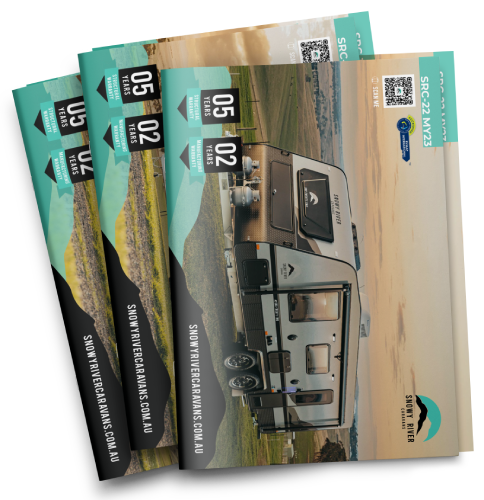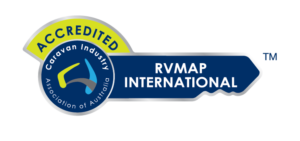- Home
- About
- Our CaravansSRCSRC-14
SRC-14
from $55,990 Tow-Away Nationwide*
Welcome to the world of the 2023 SRC-14, the ultimate compact caravan that doesn't sacrifice on comf...
 Sleeps up to 2
Sleeps up to 2 Refrigerator
Refrigerator Shower
Shower Toilet
Toilet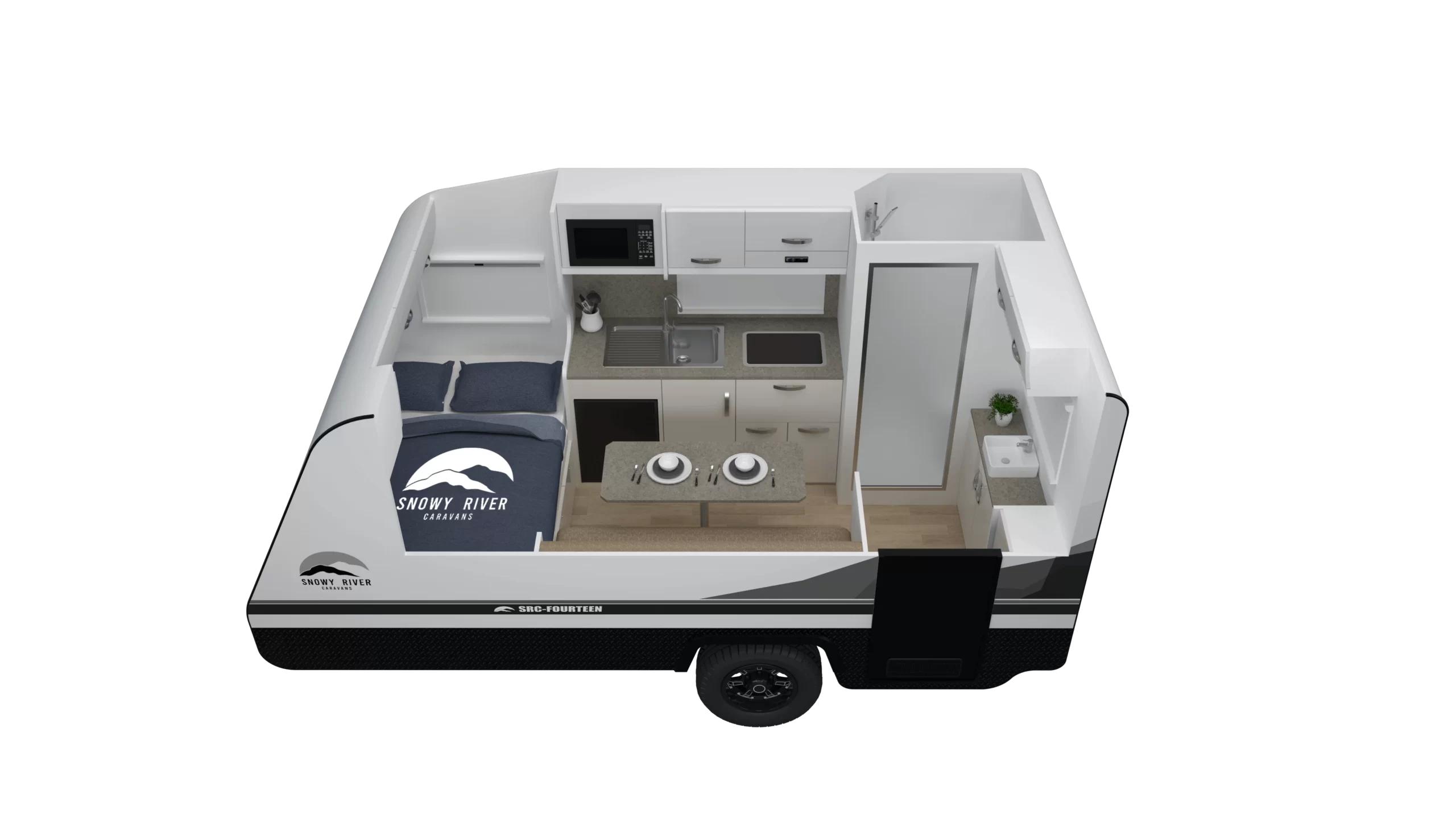 SRC-16
SRC-16SRC-16
from $59,490 Tow-Away Nationwide*
The 2023 SRC-16 is the ideal compact caravan for an unforgettable Aussie caravanning adventure. With...
 Sleeps up to 2
Sleeps up to 2 Refrigerator
Refrigerator Shower
Shower Toilet
Toilet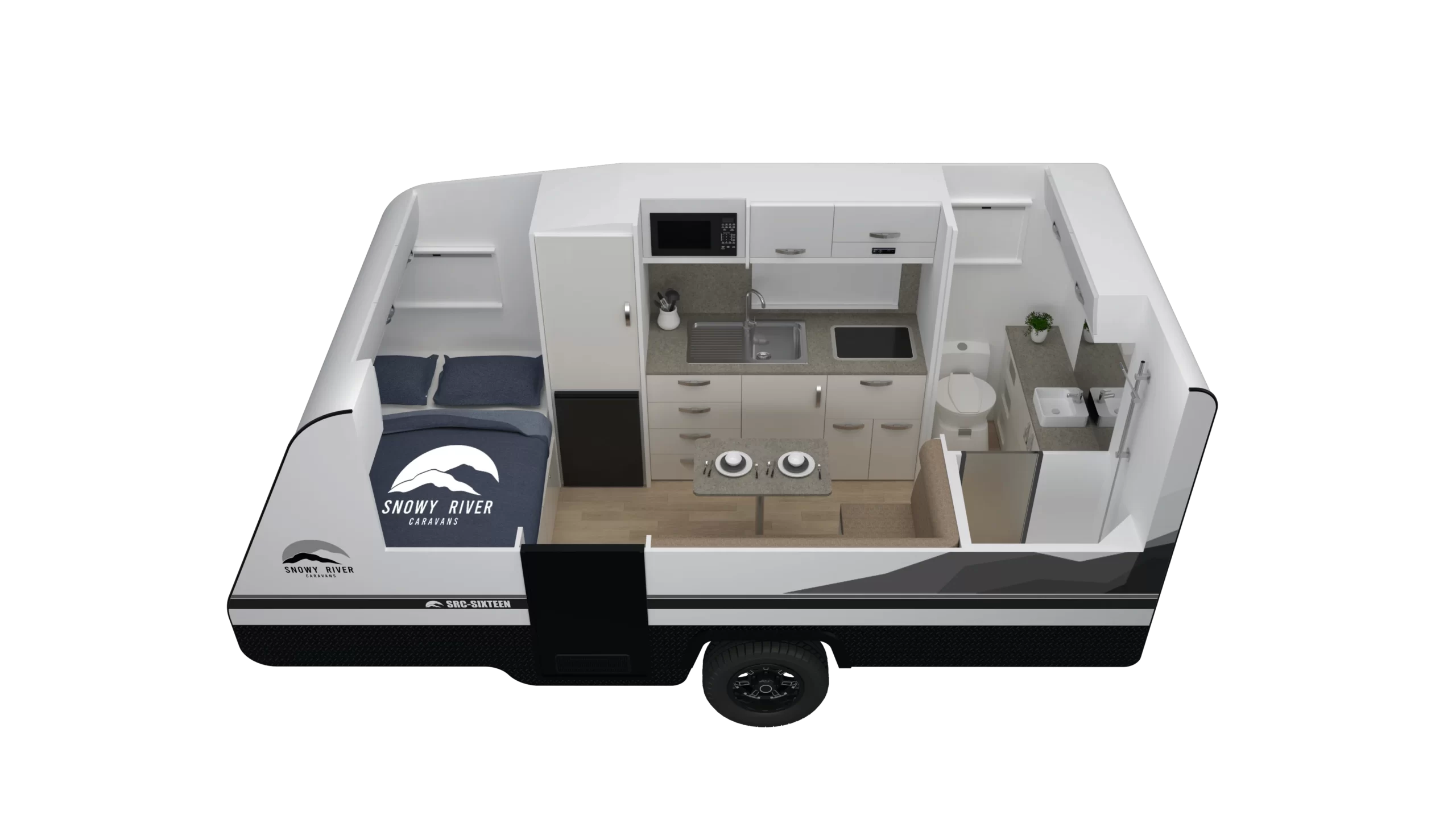 SRC-17
SRC-17SRC-17
from $63,490 Tow-Away Nationwide*
The redesigned SRC-17 2023 model is the perfect caravan for a stylish, hassle-free adventure. Ideal ...
 Sleeps up to 2
Sleeps up to 2 Refrigerator
Refrigerator Shower
Shower Toilet
Toilet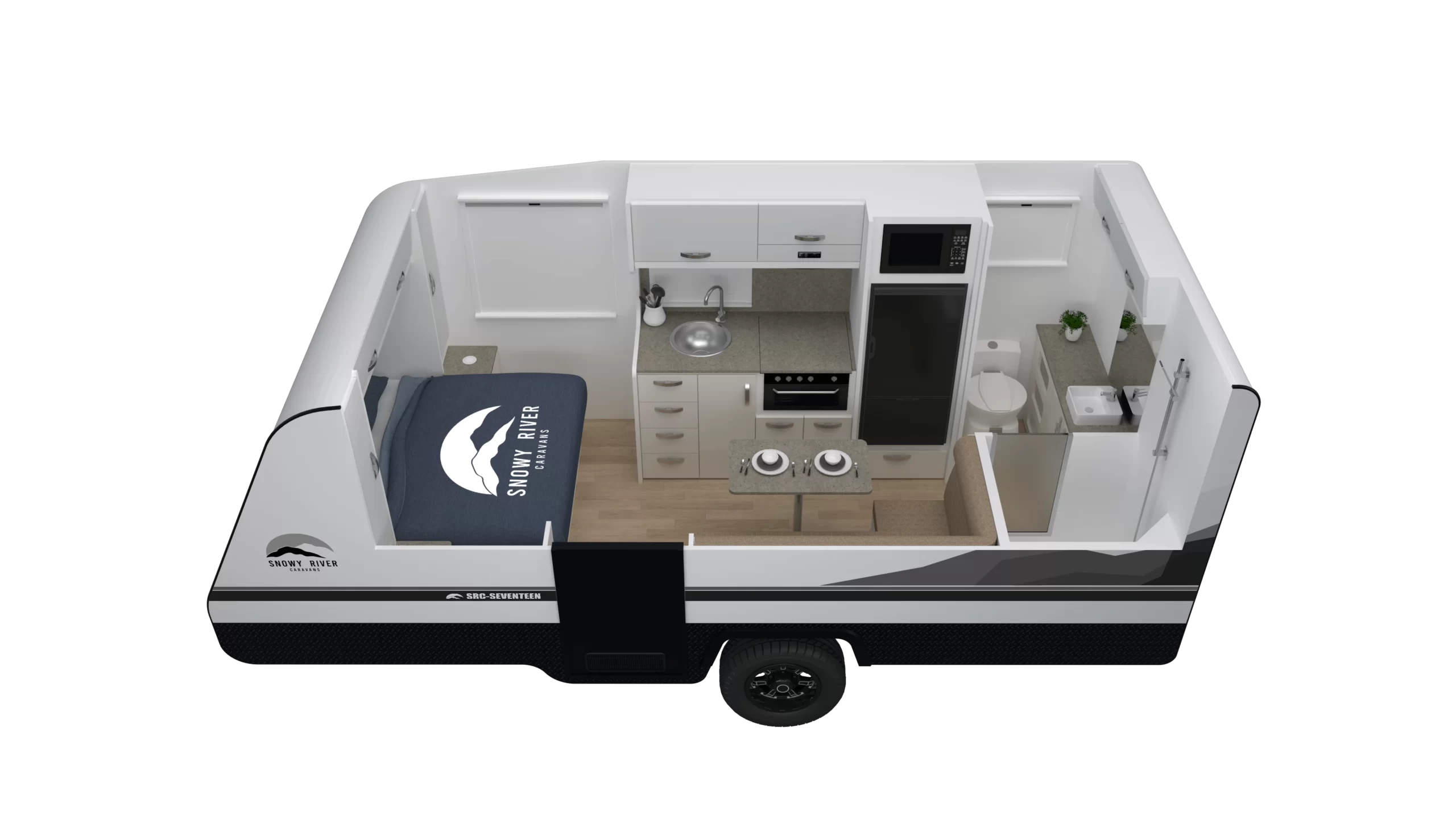 SRC-18
SRC-18SRC-18
from $66,490 Tow-Away Nationwide*
The 2023 SRC-18 model has been expertly redesigned to provide a uniquely Australian caravan experien...
 Sleeps up to 2
Sleeps up to 2 Refrigerator
Refrigerator Shower
Shower Toilet
Toilet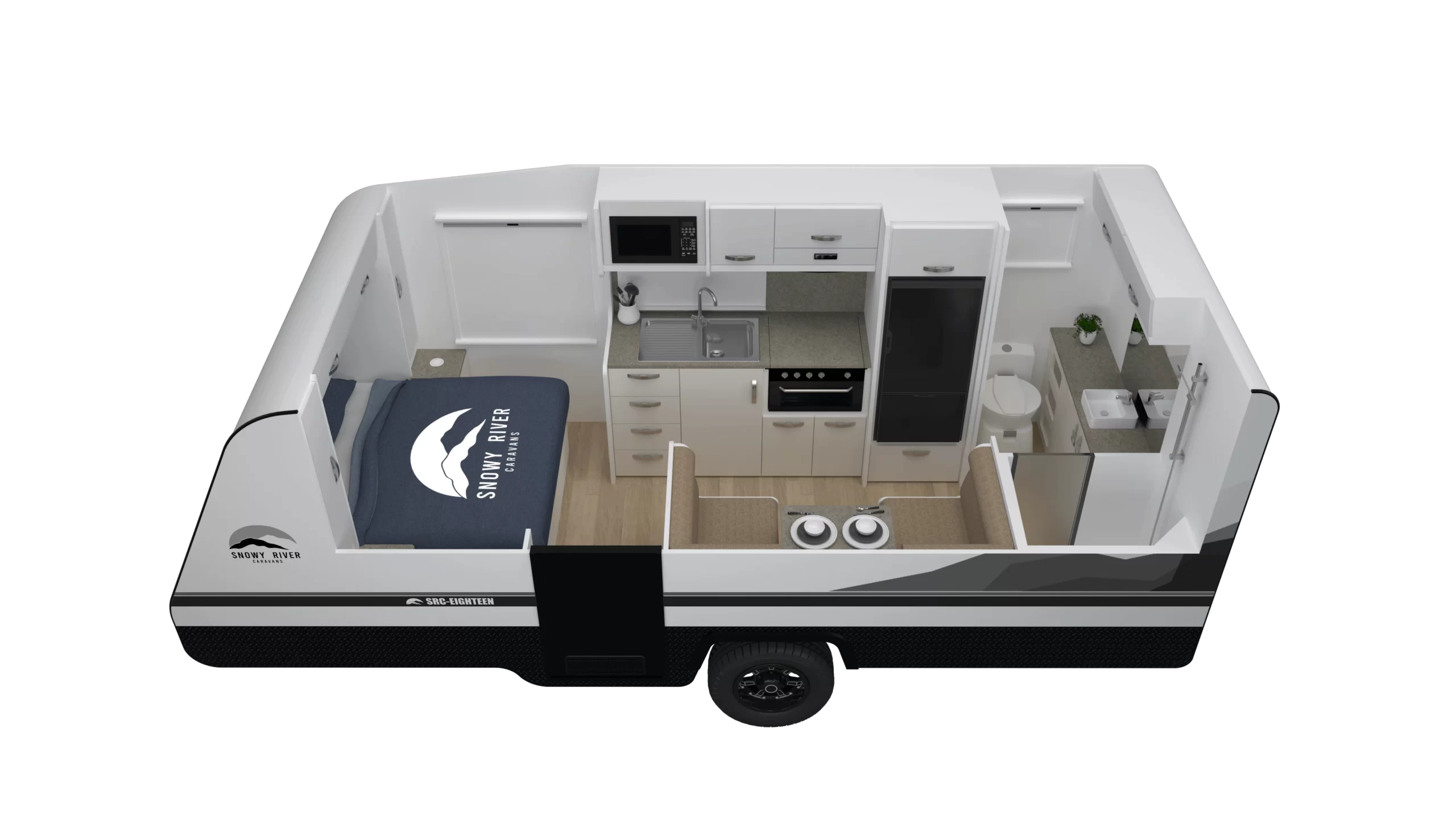 SRC-19
SRC-19SRC-19
from $69,990 Tow-Away Nationwide*
Step inside the 2023 SRC-19 caravan and discover a world of refined elegance, luxurious comfort, and...
 Sleeps up to 2
Sleeps up to 2 Refrigerator
Refrigerator Shower
Shower Toilet
Toilet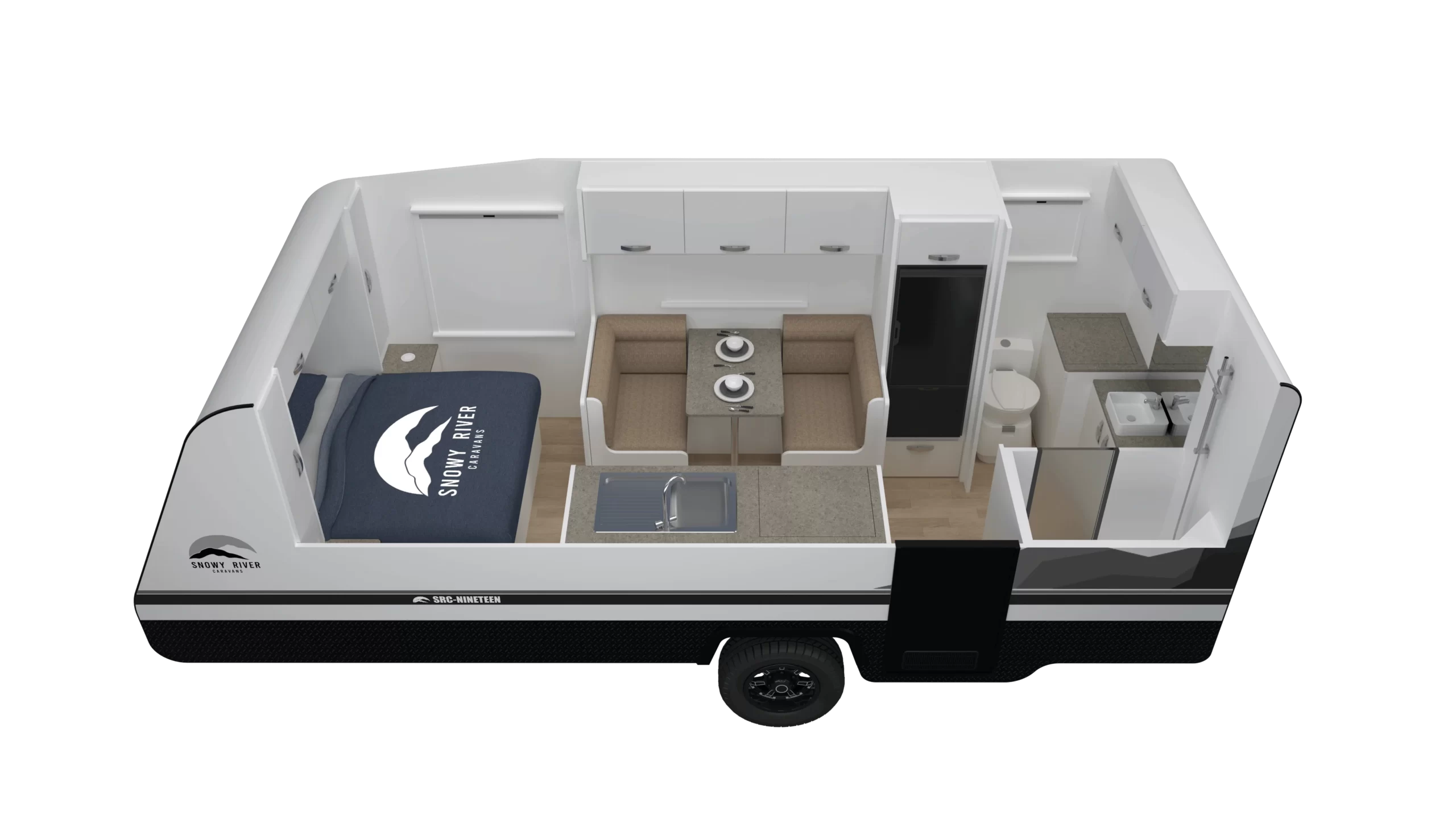 SRC-20
SRC-20SRC-20
from $71,490 Tow-Away Nationwide*
Introducing the SRC-20 2023 model, expertly crafted to enhance your touring experience across Austra...
 Sleeps up to 2
Sleeps up to 2 Refrigerator
Refrigerator Shower
Shower Toilet
Toilet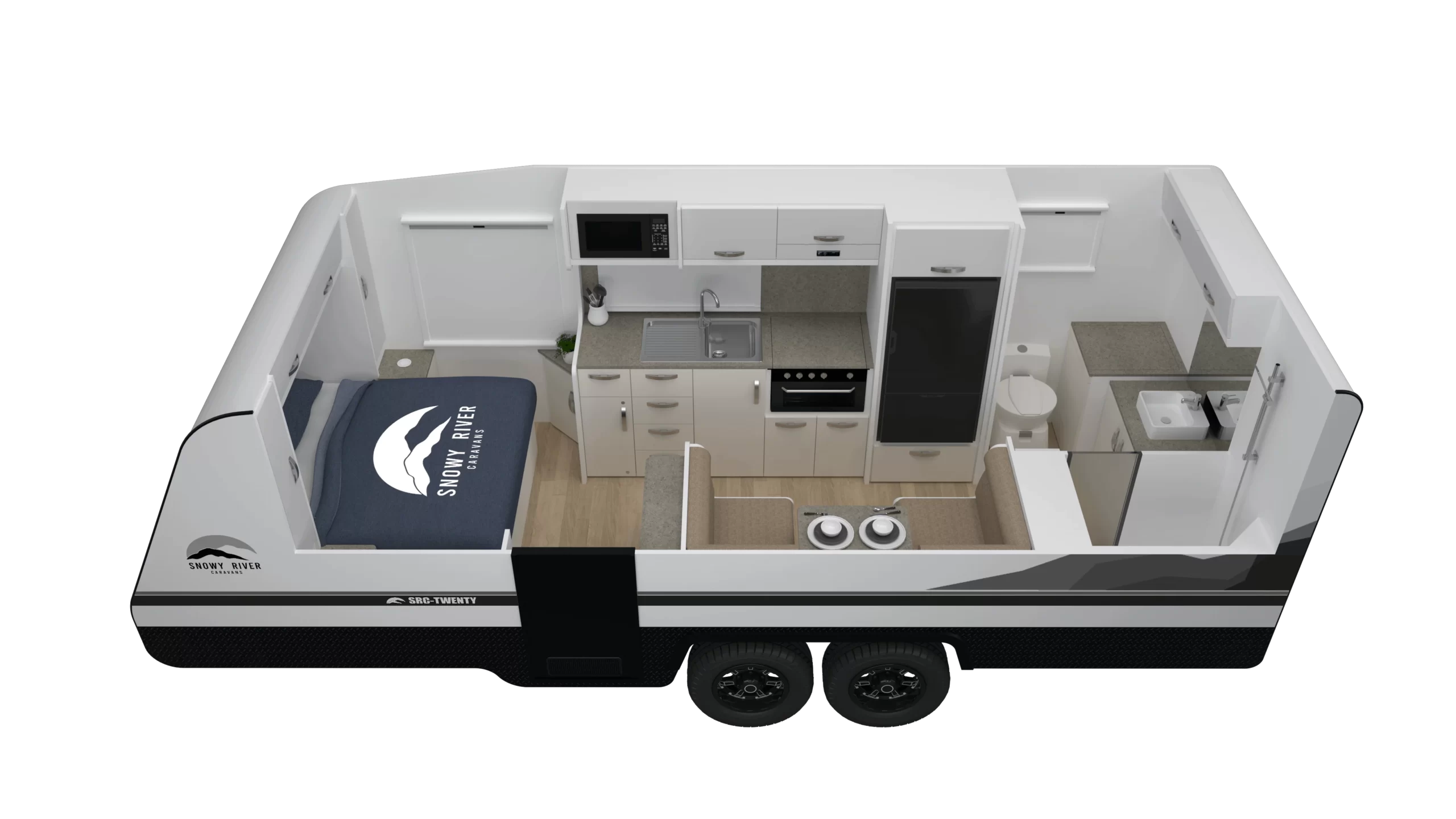 SRC-20F
SRC-20FSRC-20F
from $72,990 Tow-Away Nationwide*
The SRC-20F model is the ultimate choice for your family's next adventure. This feature-packed carav...
 Sleeps up to 4
Sleeps up to 4 Refrigerator
Refrigerator Shower
Shower Toilet
Toilet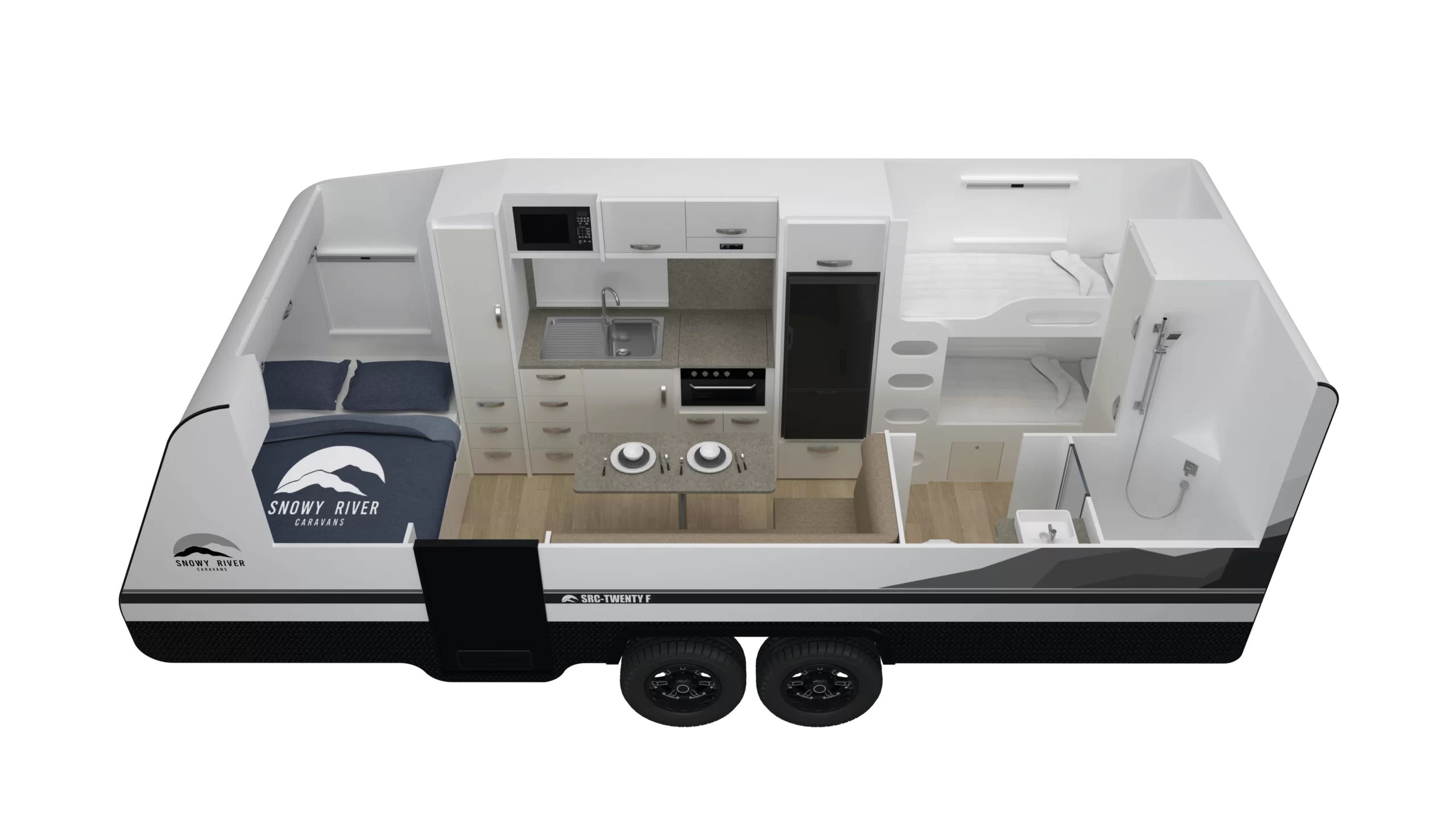 SRC-21
SRC-21SRC-21
from $72,990 Tow-Away Nationwide*
The 2023 SRC-21 Caravan is the perfect balance of practicality and style, complete with enhanced fea...
 Sleeps up to 2
Sleeps up to 2 Refrigerator
Refrigerator Shower
Shower Toilet
Toilet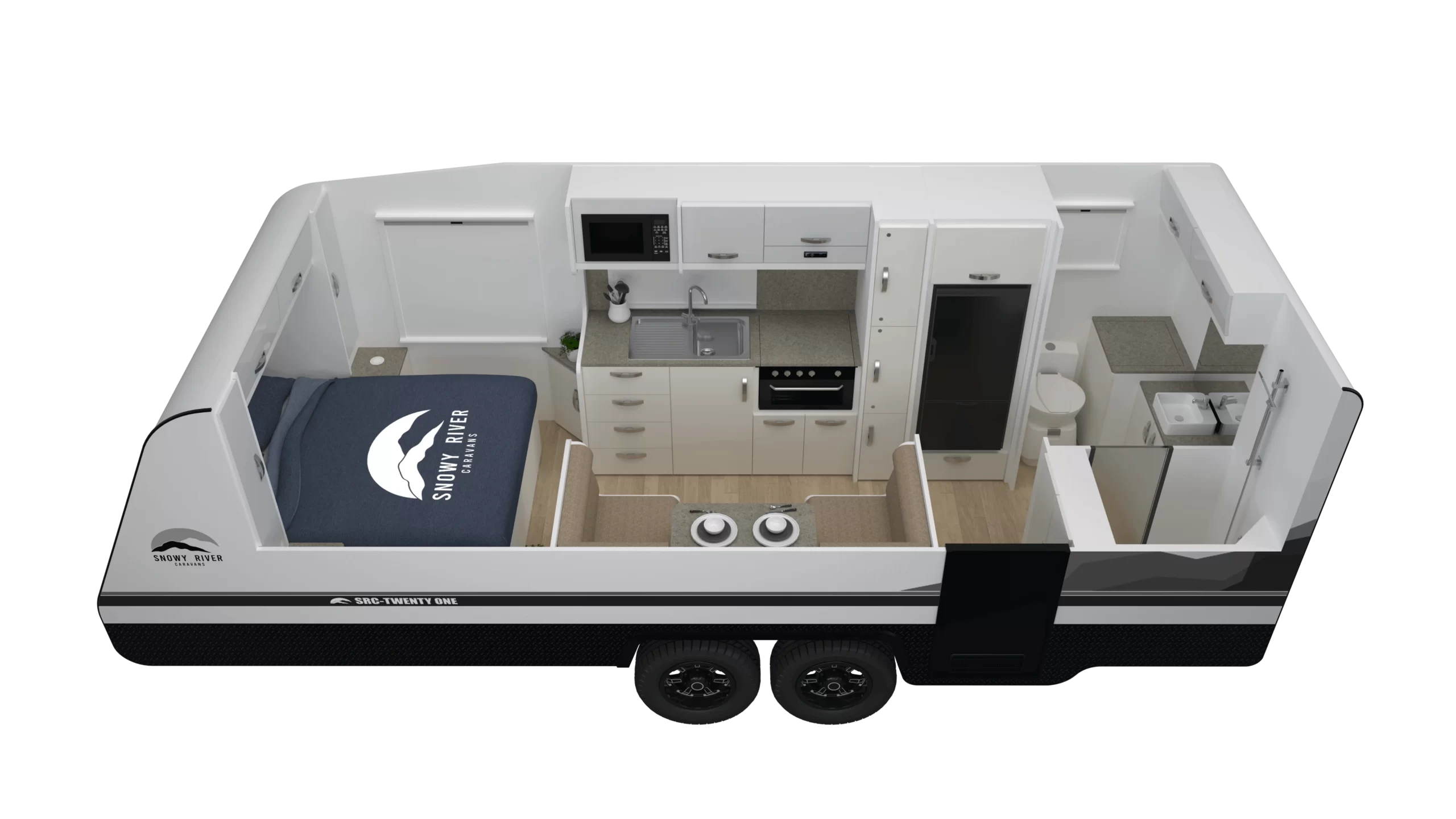 SRC-21S
SRC-21SSRC-21S
from $78,490 Tow-Away Nationwide*
SRC-21S state-of-the-art slide-out model represents the future of caravan experiences, blending inno...
 Sleeps up to 2
Sleeps up to 2 Refrigerator
Refrigerator Shower
Shower Toilet
Toilet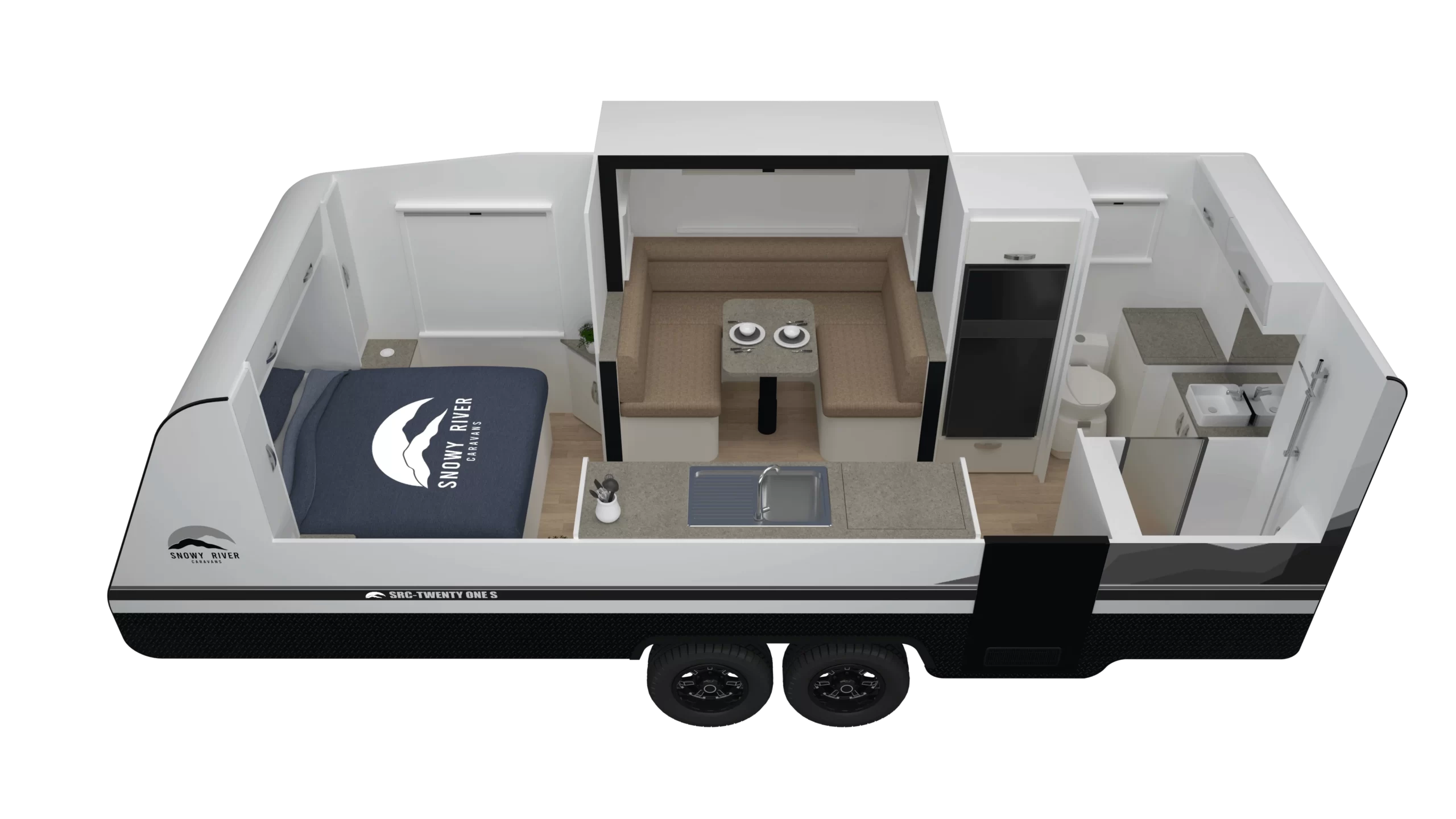 SRC-22
SRC-22SRC-22
from $73,990 Tow-Away Nationwide*
The 2023 SRC-22 upgraded model provides exceptional quality, full of internal and external features ...
 Sleeps up to 2
Sleeps up to 2 Refrigerator
Refrigerator Shower
Shower Toilet
Toilet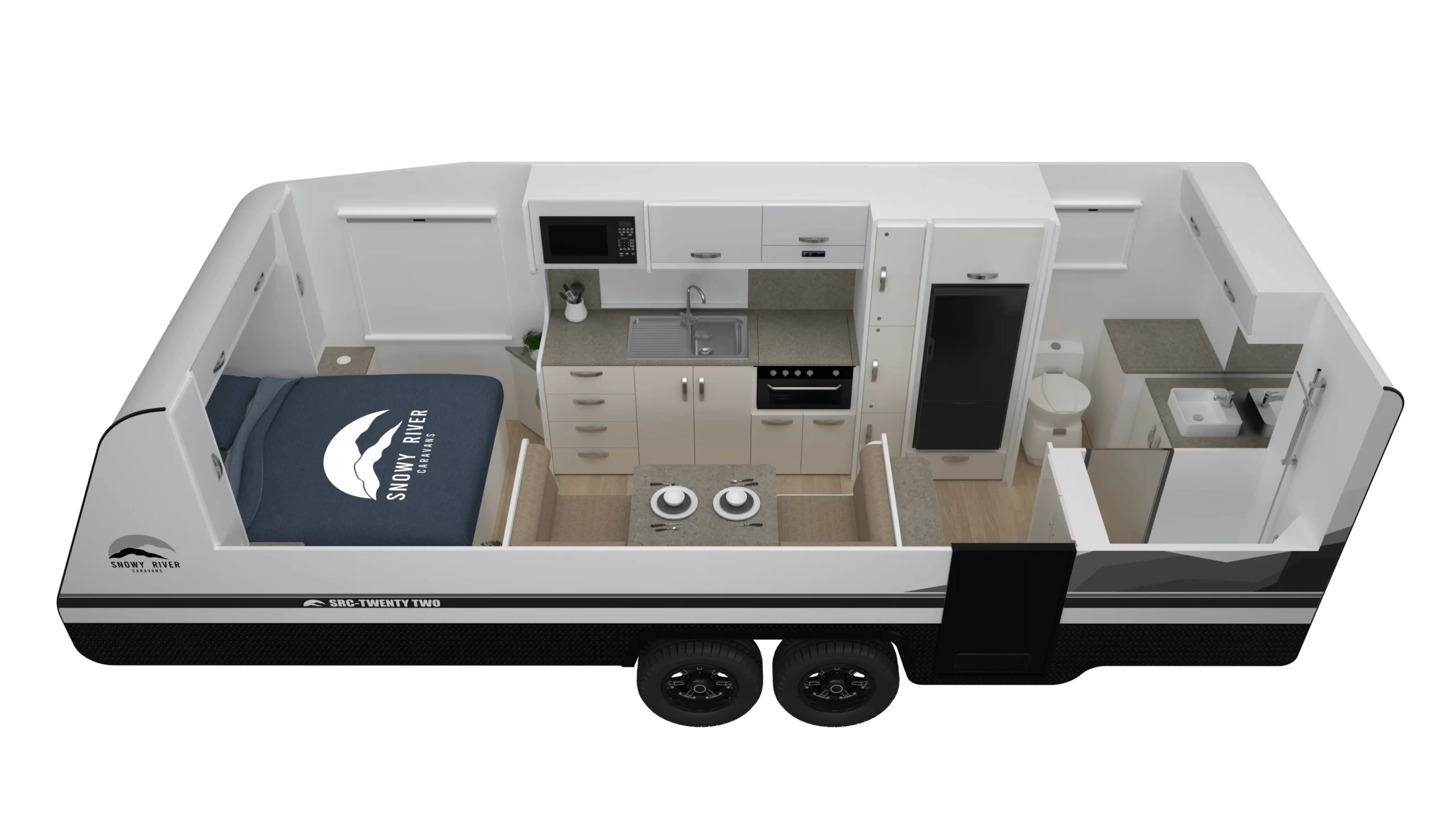 SRC-22F
SRC-22FSRC-22F
from $76,990 Tow-Away Nationwide*
Introducing the all-new 2023 Snowy River SRC-22F model - the ideal choice for your family's upcoming...
 Sleeps up to 5
Sleeps up to 5 Refrigerator
Refrigerator Shower
Shower Toilet
Toilet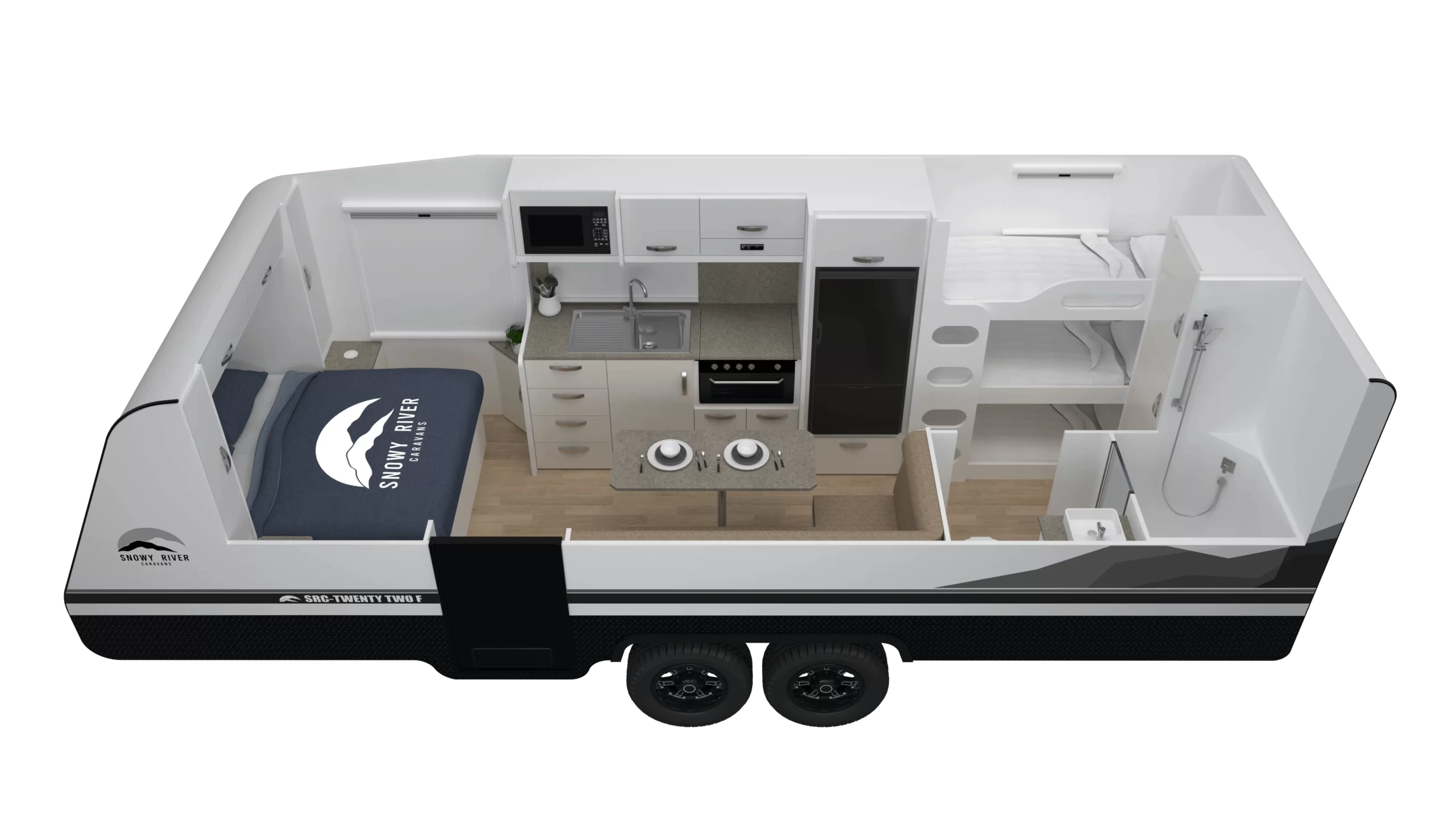 SRC-22S
SRC-22SSRC-22S
from $79,490 Tow-Away Nationwide*
Designed to suit Australian caravanning and camping adventures, this caravan boasts a spacious layou...
 Sleeps up to 2
Sleeps up to 2 Refrigerator
Refrigerator Shower
Shower Toilet
Toilet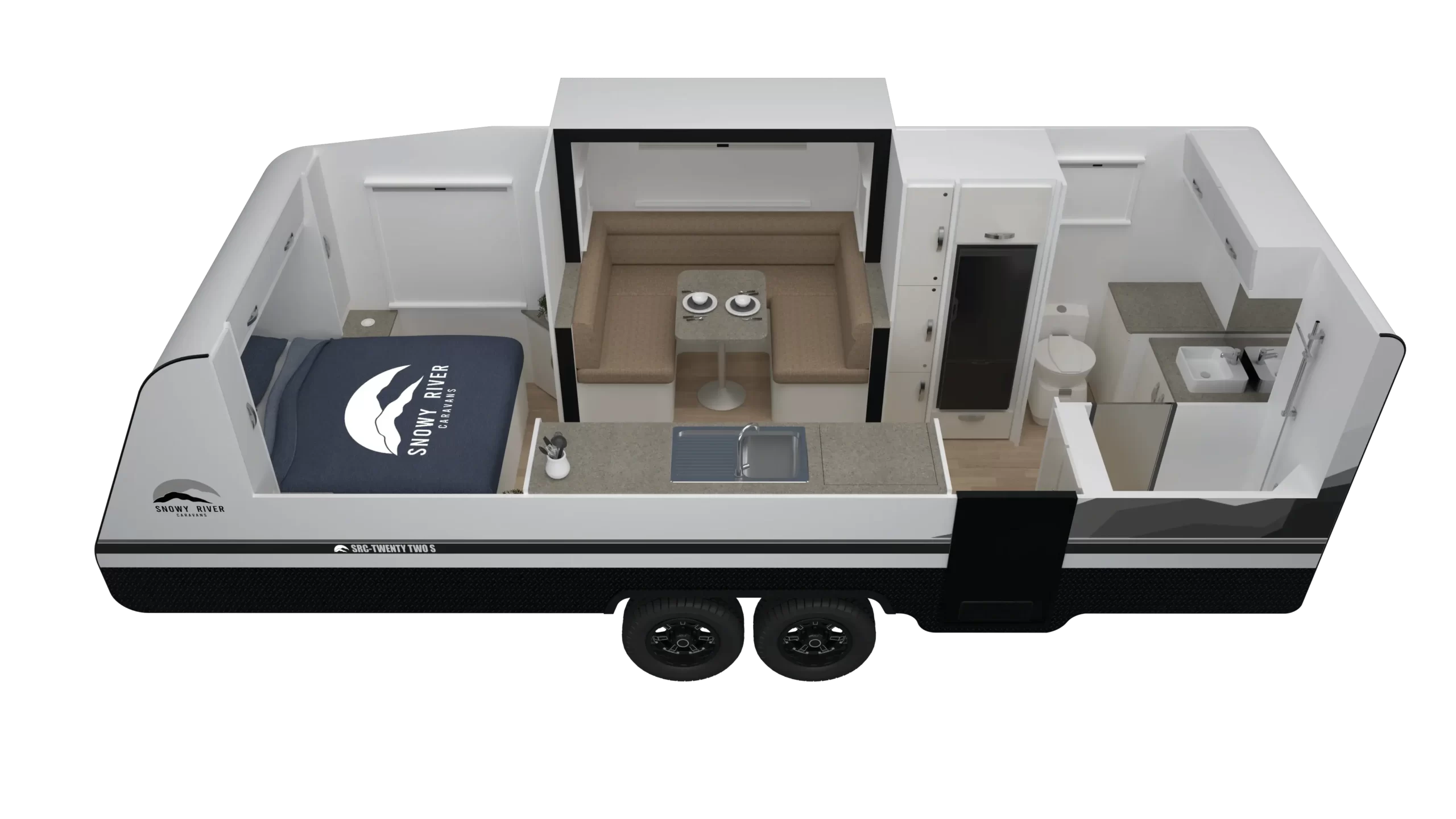 SRC-23
SRC-23SRC-23
from $75,490 Tow-Away Nationwide*
Explore Space and Comfort. The SRC-23, the largest caravan in the Snowy River range, is a true stand...
 Sleeps up to 2
Sleeps up to 2 Refrigerator
Refrigerator Shower
Shower Toilet
Toilet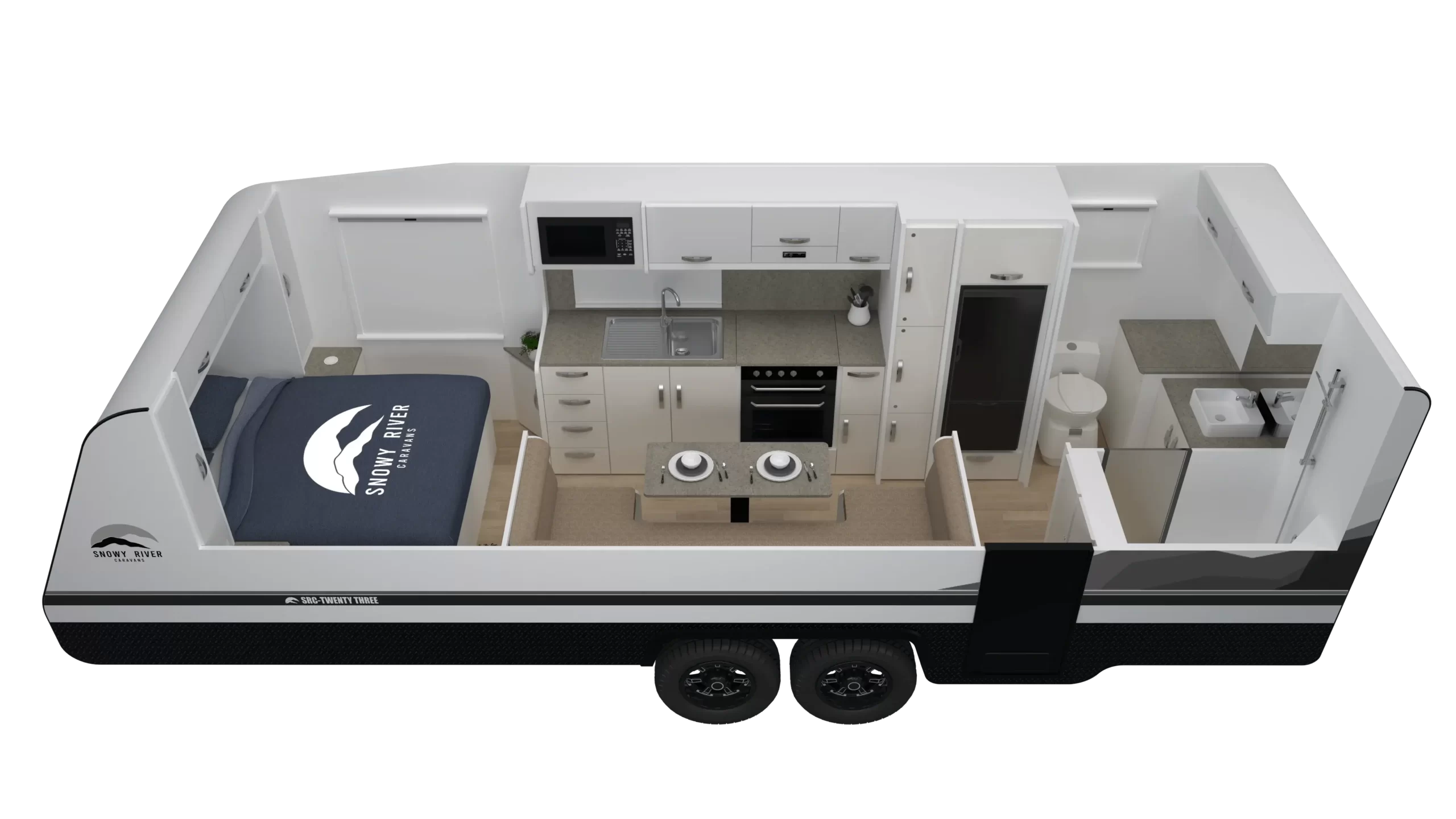 SRTSRT-19
SRTSRT-19SRT-19
from $84,990 Tow-Away Nationwide*
Are you ready to experience Australia in a whole new way? Look no further than the Multi-Terrain SRT...
 Sleeps up to 2
Sleeps up to 2 Refrigerator
Refrigerator Shower
Shower Toilet
Toilet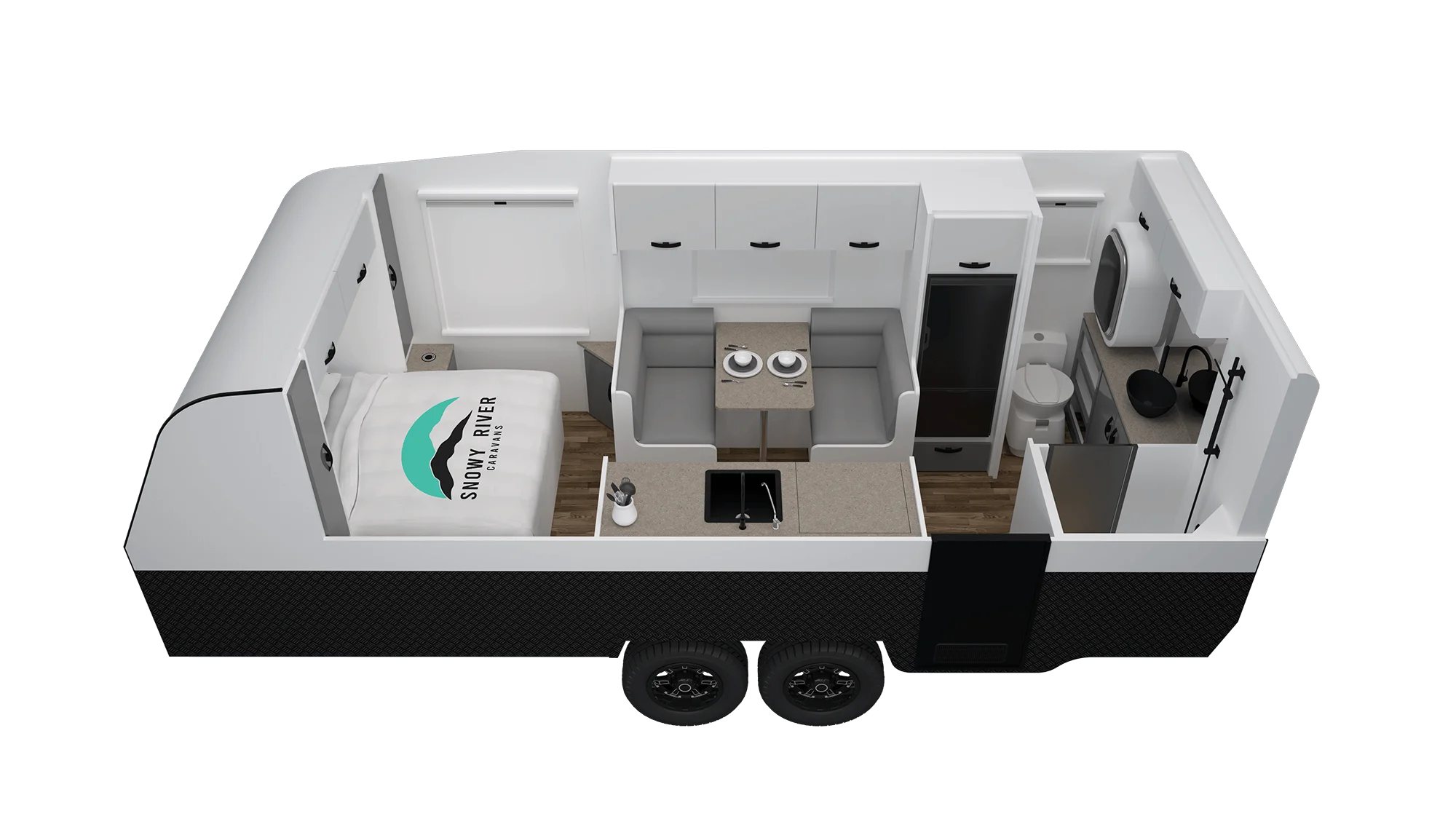 SRT-20
SRT-20SRT-20
from $86,490 Tow-Away Nationwide*
Discover the beauty of Australia with the sophisticated and roomy SRT20 Multi-Terrain off-road carav...
 Sleeps up to 2
Sleeps up to 2 Refrigerator
Refrigerator Shower
Shower Toilet
Toilet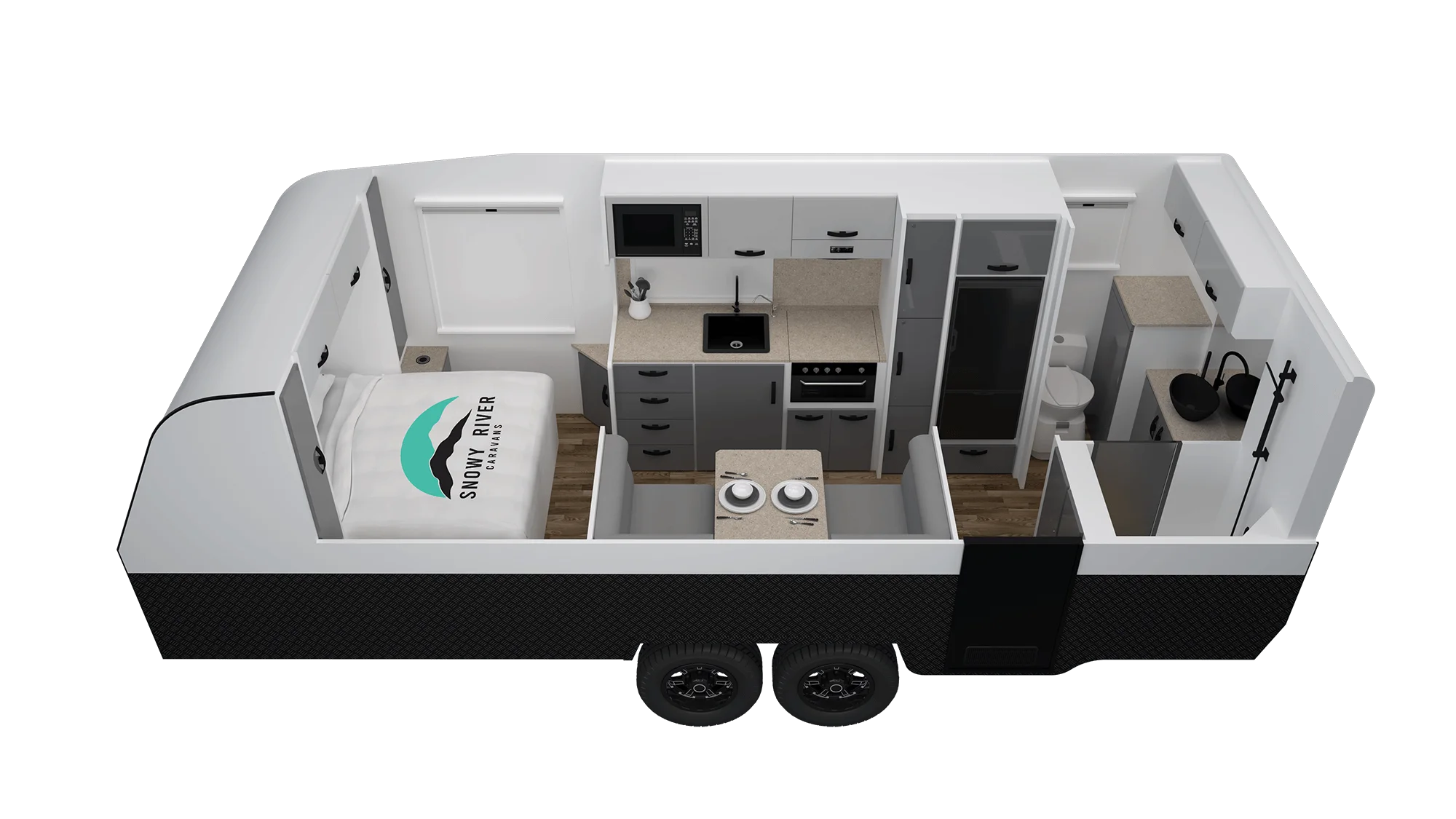 SRT-20F
SRT-20FSRT-20F
from $86,990 Tow-Away Nationwide*
The Snowy River SRT20F is not your typical family offroad caravan. It's a rugged, Multi-Terrain desi...
 Sleeps up to 4
Sleeps up to 4 Refrigerator
Refrigerator Shower
Shower Toilet
Toilet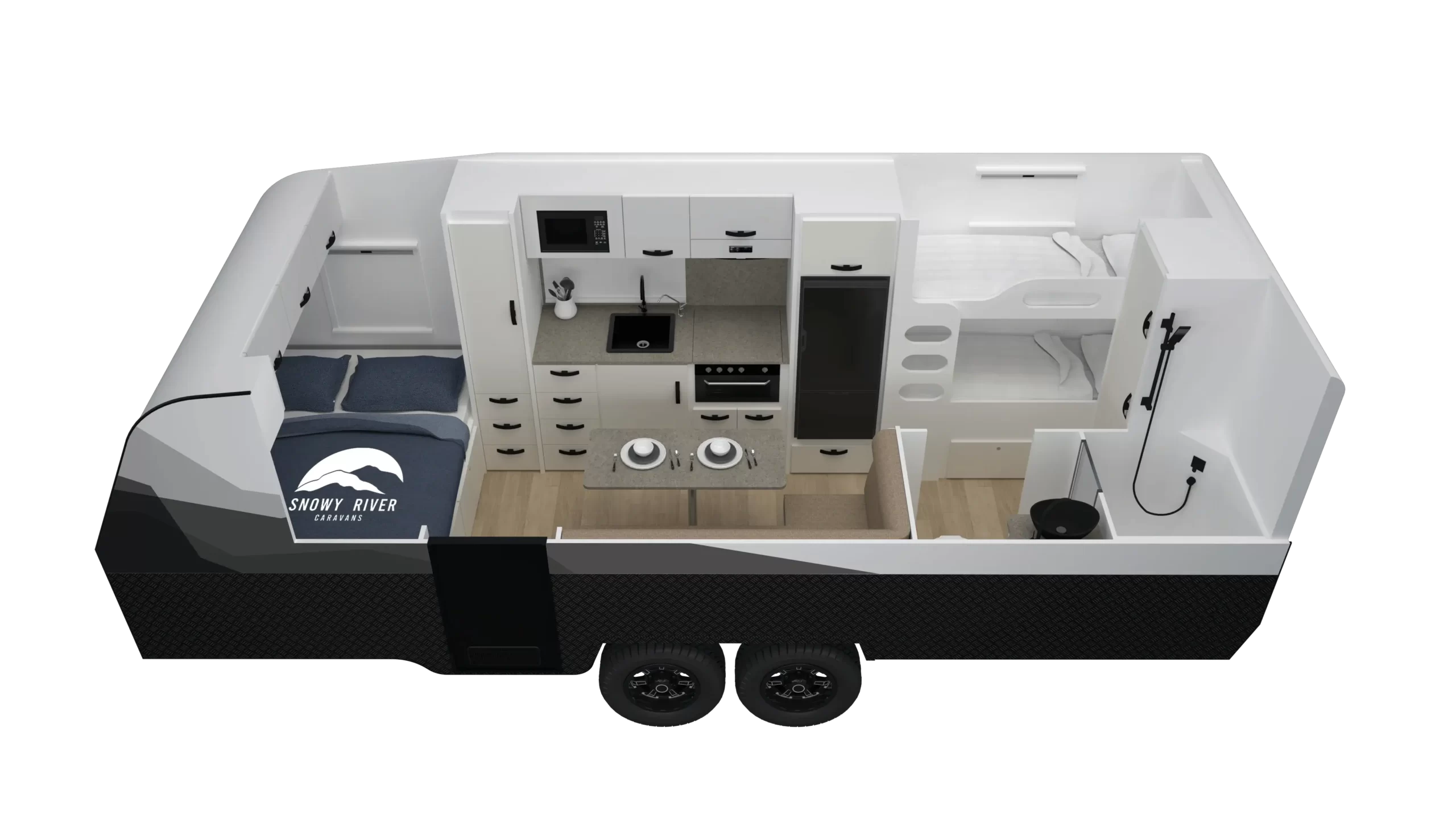 SRT-22F
SRT-22FSRT-22F
from $89,990 Tow-Away Nationwide*
Why not treat your loved ones to an ultimate outdoor adventure? The remarkable SRT22F is exactly wha...
 Sleeps up to 5
Sleeps up to 5 Refrigerator
Refrigerator Shower
Shower Toilet
Toilet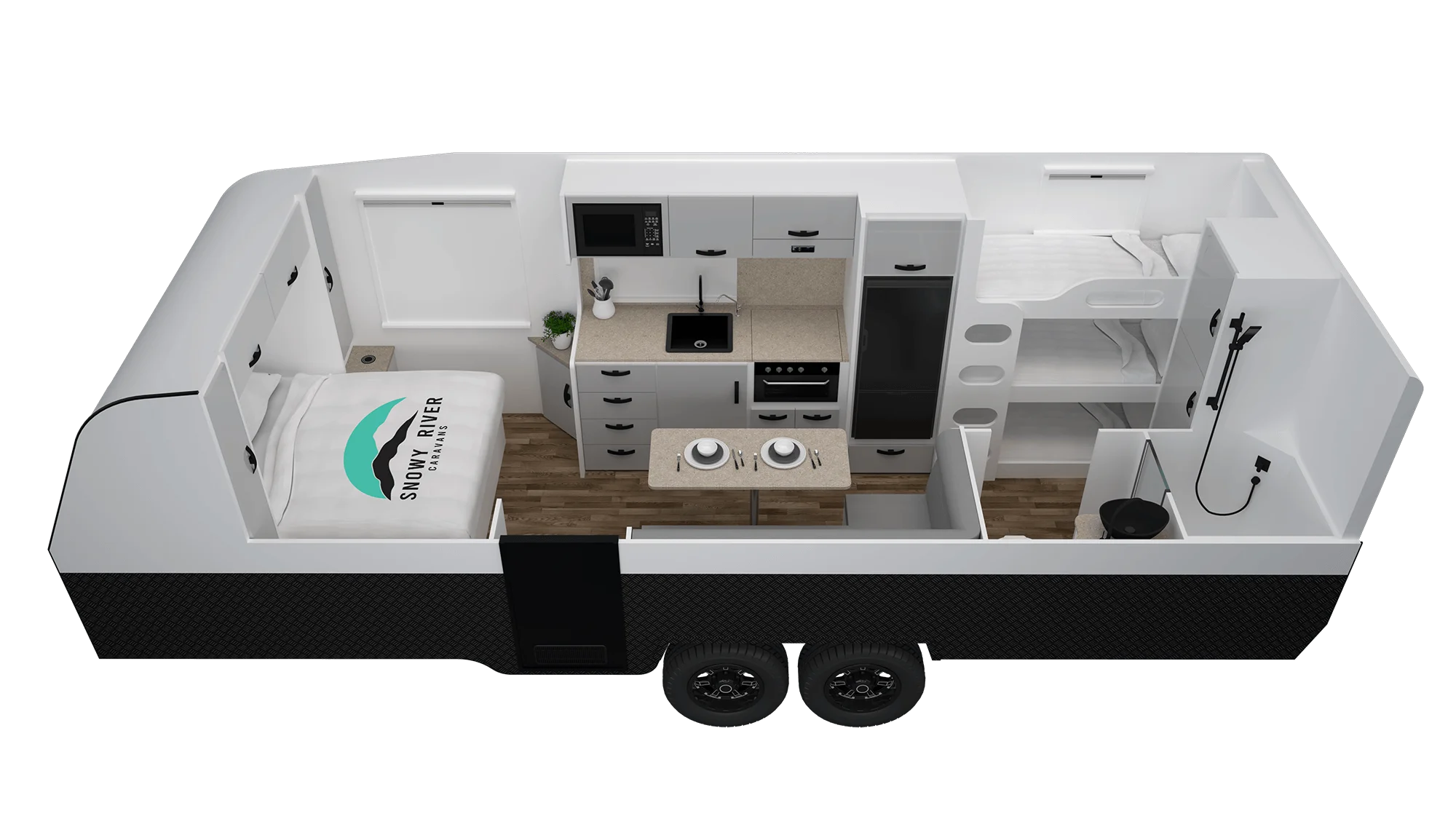
- Build Your Dream
The Beginners Guide to Buying a Caravan
A holiday in your own caravan can be one of the most fun, relaxing and cost-effective ways to explore Australia. But with so many different types of caravans to choose from and so many other features and add-ons to consider, it can be challenging to know where to start when choosing your first caravan.
To help you make the right decision, here’s our beginner’s guide to buying a caravan with some important tips to ensure you get the perfect one for your needs.
What Type of Tow Vehicle Do I Need?
Before you even start looking at buying a van, you need to decide whether you’ll use the vehicle you have for towing or will be purchasing a new one. Find out your vehicle’s towing capacities like its gross vehicle mass (GVM), maximum tow ball weight, and gross combination mass, and go from there. If you are going to buy a new tow vehicle, it’s usually safer to choose your caravan first and buy a car to suit.
Some key caravan weights to compare to your towing vehicle are aggregate trailer mass (ATM) and empty ball weight. ATM is the caravan’s maximum weight and includes the tare weight of the caravan plus its payload, or when it’s fully loaded, so it’s always best to make sure you can legally tow the ATM and a little extra. It’s also important to remember that your new caravan’s tow ball weight will vary depending on how it’s loaded.
For a breakdown of these weights to help you feel confident about how much weight you can or cannot tow, check out our
towing weights dictionary.
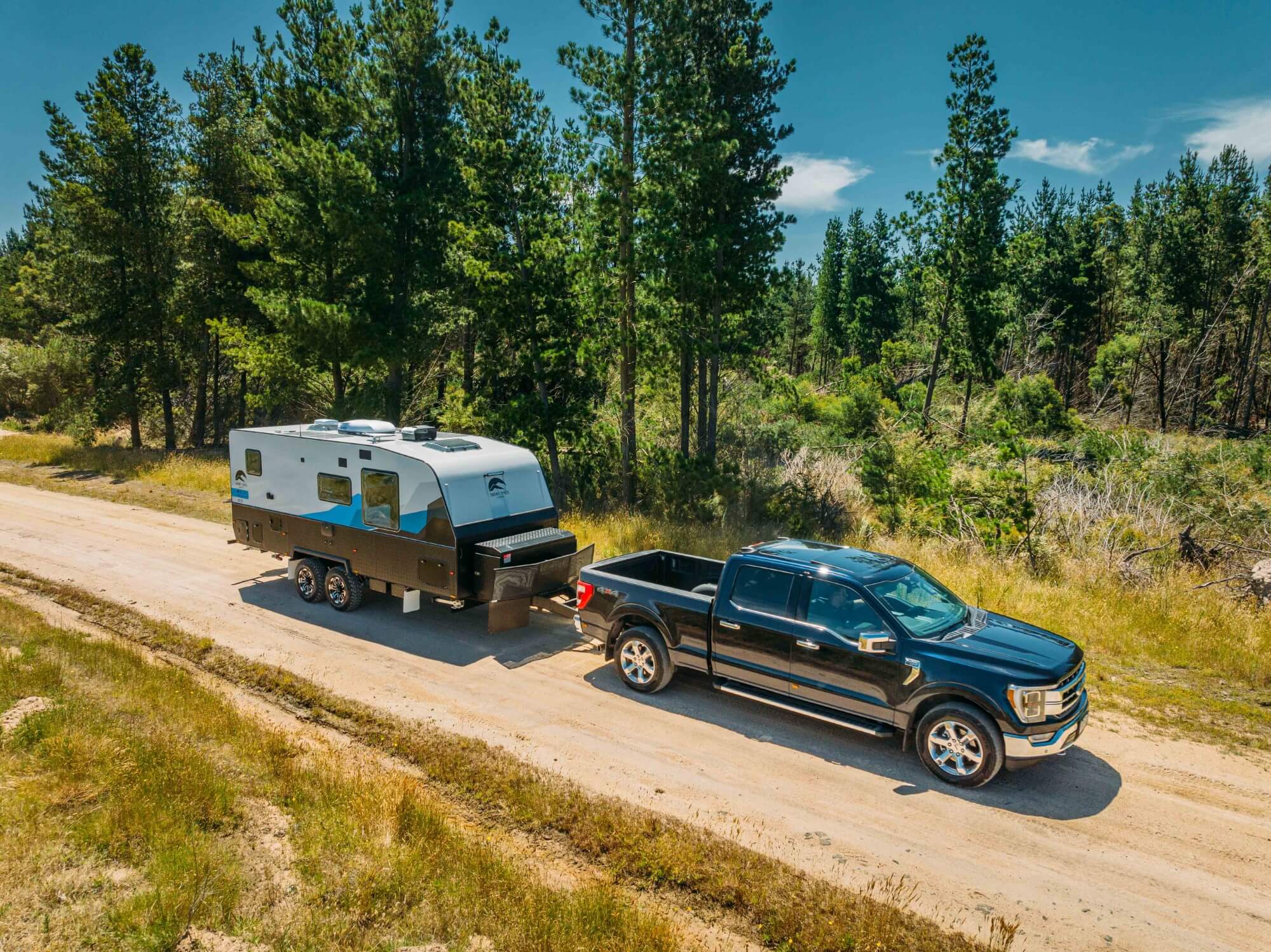
Where Are You Towing Your Caravan
Before buying a caravan, you’ll need to ask yourself where you’ll be towing it and how the caravan will be used. Consider what kind of roads you will be on to determine the off-road ability you’ll need, factoring in the limitations of your tow vehicle.
Will you stick to bitumen or be venturing off the beaten track? If it’s the latter, you can narrow your search to semi off-road or off-road caravans to make sure the off-road capability of your caravan matches where you’ll be taking it. Look for features like increased ground clearance and independent suspension to get you there, plus solar panels and extra water tanks for those nights off the grid.
Finally, be realistic about how often you will be able to use your caravan. Understanding whether it’s going to be used every other weekend, just for an annual holiday, or if you’re planning to live in it indefinitely. This will help you decide how much you’re willing to compromise and will help get you one step closer to your final decision.
Other Costs Including Insurance, Registration, Service and Storage
In addition to the purchase price of your new caravan, you need to budget for insurance and registration fees. It’s also recommended that you service your caravan at least once a year and after your first trip.
Additional fuel costs and maintenance of your vehicle should be a factor as your car’s fuel economy will decrease while towing will put additional strain on any car.
Storage fees may also be a factor depending on how much space you have at home. Measure the height, width and length of the area you plan to store your caravan. Pay attention to any obstacles on the way to that area, such as carports or low-hanging trees.
Once you’ve measured your space, compare that to the travel height, length, and width of the caravans you’re considering. Remember that you’ll also need room to manoeuvre your caravan into and out of that space.
Who is Caravanning With You?
This is a major factor in finding the right caravan for your needs. If you have kids or grandkids or think that taking the whole family in your new van sounds appealing, then you should look for a large family caravan with enough seating and sleeping space for everyone.
Bunk beds aren’t the only option for sleeping kids or guests. An annexe can be a great option if you’re happy to spend some time setting up and packing it down each trip. If you’re planning on using your caravan in a static location, then setting up an annexe once isn’t a big deal.
If you’re caravanning with your partner or you’re a solo traveller, a smaller van may be all you need. If you have pets coming along for the ride, remember to factor in their needs too!

Setting Your Budget
Caravans come in all shapes and sizes and at all different price points. It’s essential to set a realistic budget and decide what you are and aren’t willing to compromise on but remember to remain flexible on some things.
Set your budget, then start looking at buying a caravan in your price range. If you find one you love that’s a little out of your price range, consider if there are any features you can live without or if finance is an option to make it work?
Caravan Types
Traditional or Full-Height Caravans
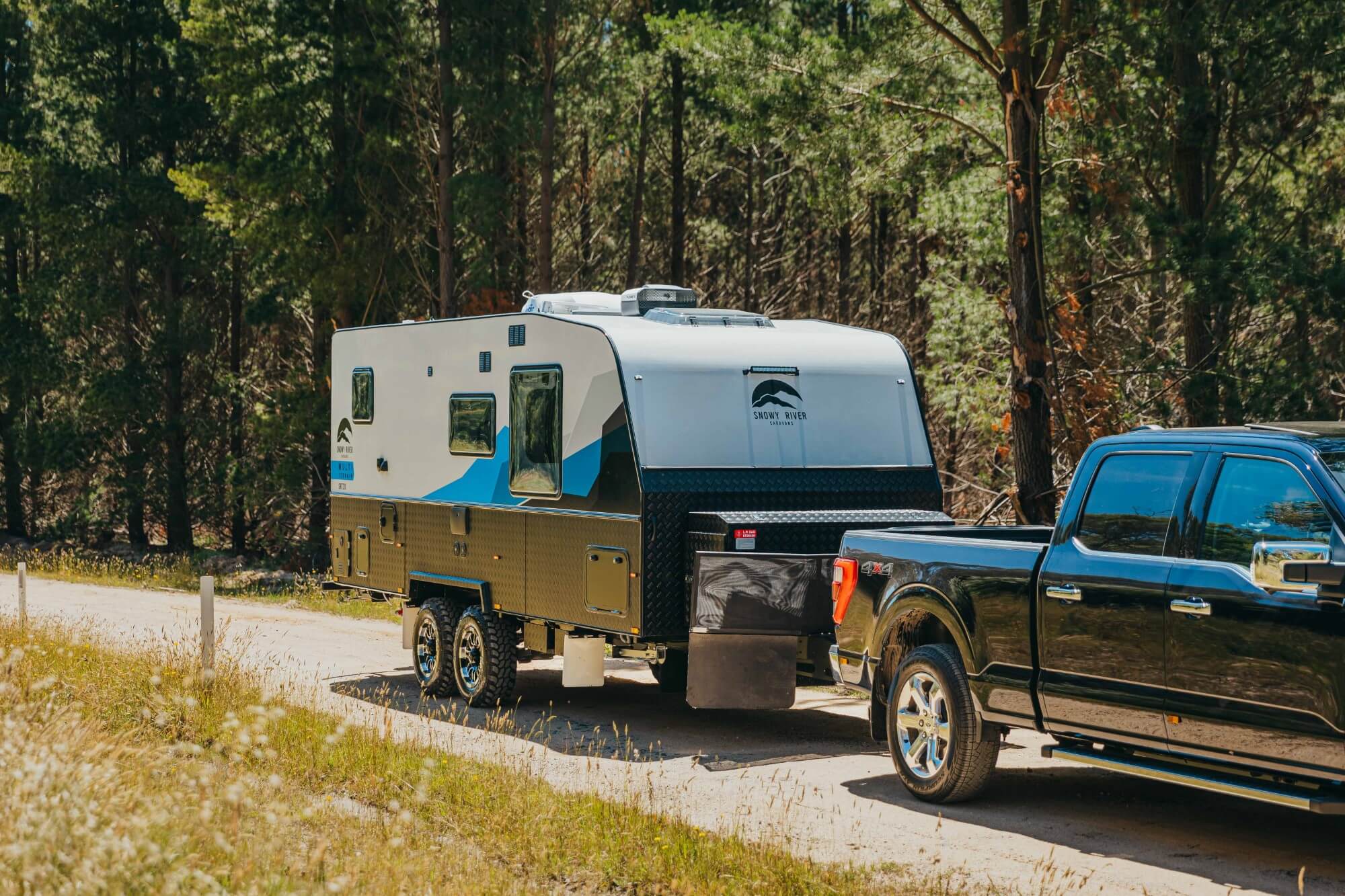
Pop-Top Caravans
Slide-out Caravans

Small Caravans
Small caravans usually have a travel length of around 7 metres or less and are short and lightweight. This makes finding storage space, hooking up, manoeuvring, and towing much easier.
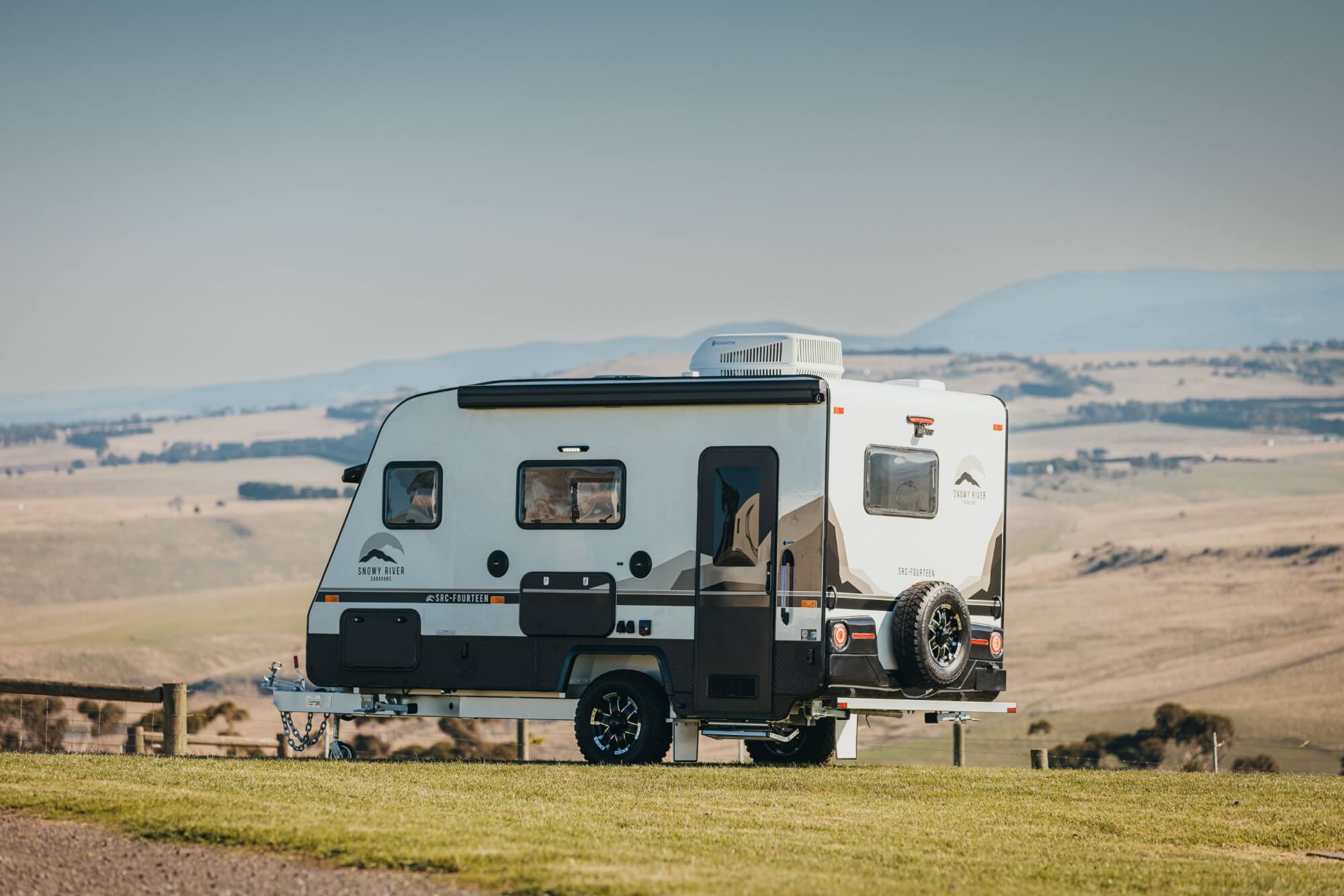
Family Caravans
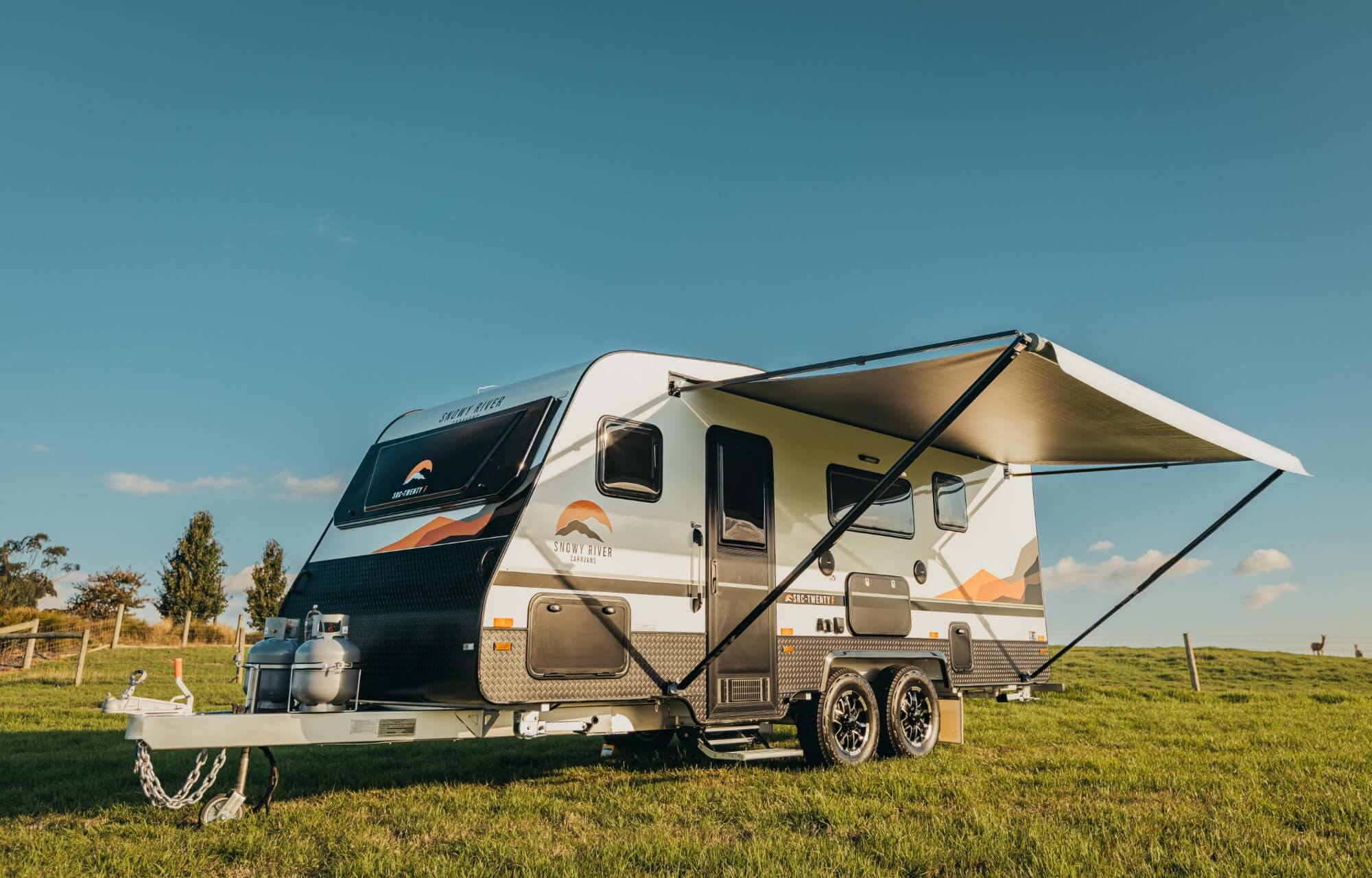
Touring Caravans
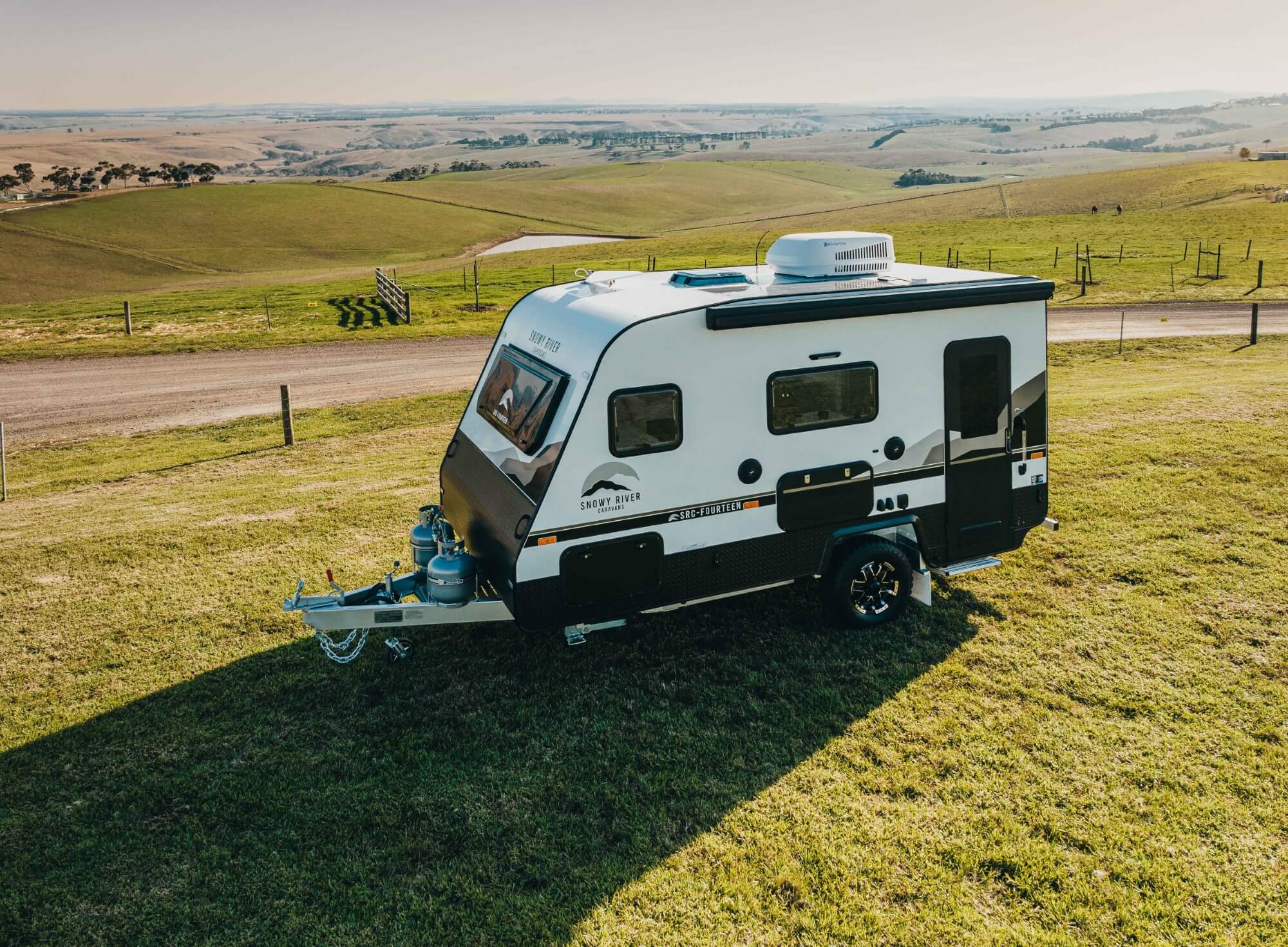
Semi Off-Road Caravans
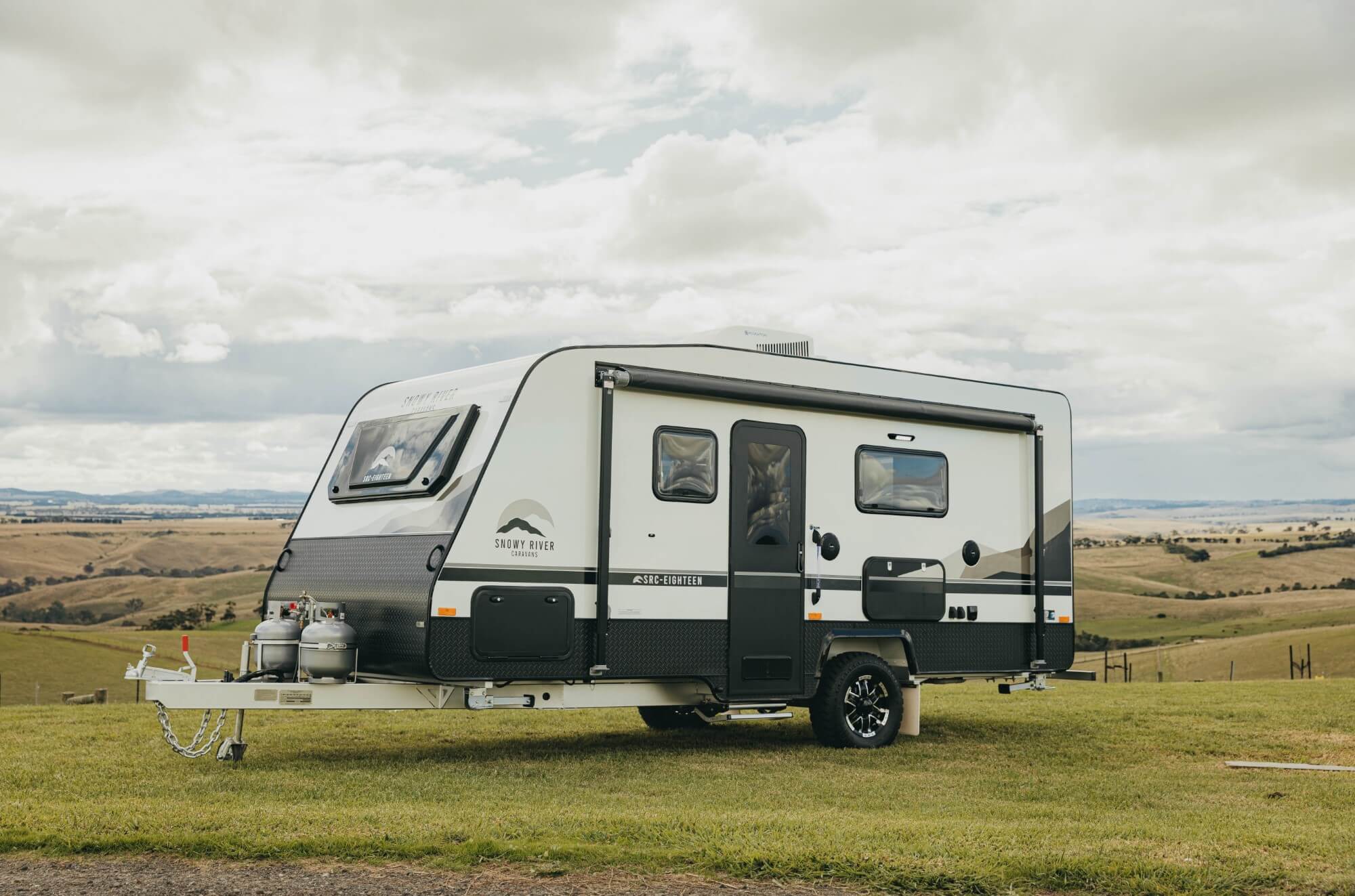
Off-Road Caravans
Single Axle Caravans
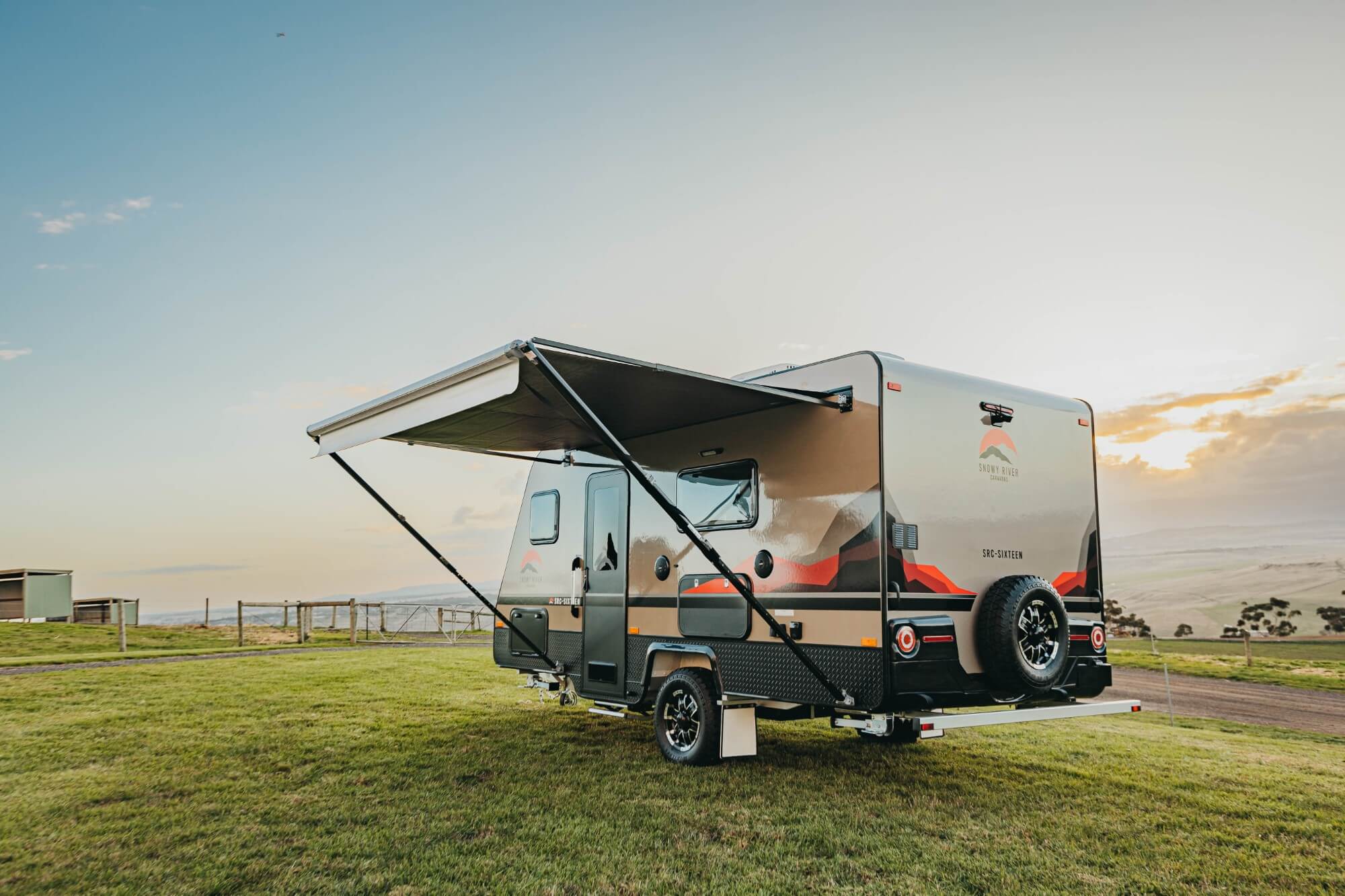
Tandem Axle Caravans
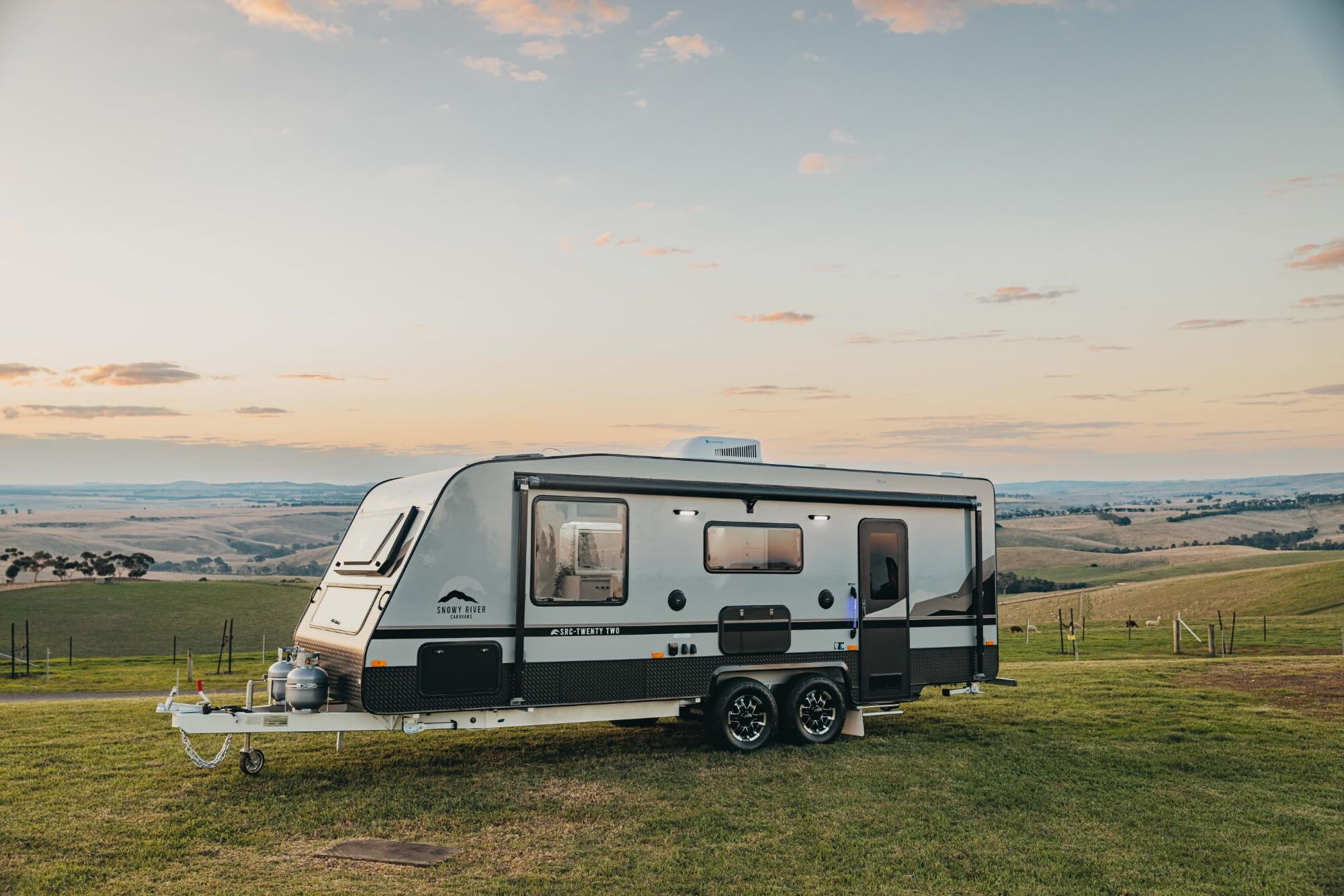
Choose a Trusted Caravan Brand
There are plenty of caravan brands on the market, and it can be hard to know which one to choose. Do your research. It’s important to choose a brand that’s known for not only excellent value but after-sales service.
You can join Facebook groups and ask other owners about their experience buying a caravan. They may also have some helpful tips for you on your caravan buying journey.
Go to a couple of caravan and camping shows and compare brands and offers. There are often good deals at the show but remember that finding the right caravan for you is more important than a temporary offer.
Check out the Snowy River Caravan Owners Facebook Group and ask about their experience.
Australian or Imported Caravans
Caravans built in Australia must adhere to Australian Design Rules, meaning they’re usually built tough to withstand harsh conditions.
This is not always the case with caravans commonly referred to as ‘grey imports’. These vehicles may lack certain features required in Australia, such as awnings and water tanks because they’re not needed in the country of manufacture.
However, you shouldn’t assume that all imports mean low quality. Snowy River Caravans are semi-imported. The body and chassis are imported and finished in our factory in Somerton, Victoria. All Snowy River Caravans are built in line with the latest Australian Design Rules and purely for Australian conditions, using some of the best-branded appliances in Australia.
Caravan Construction
Snowy River Caravans are called a composite build, which means using an aluminium frame and fibreglass walls, and packed high-density foam to form an all-composite sandwich panel construction. This modern method is out of reach for most caravan manufacturers.
This construction process is incredibly strong and lightweight, perfect for caravans that need to be able to withstand the rigours that Australia offers.
Composite Build vs Traditional Build
Used Caravans vs a New Caravan
Used Caravans
If you’re on a tight budget or not sure how often you’ll use your caravan, buying a used caravan can be a good option. But always compare to the price of new. Believe it or not, a new caravan can sometimes cost less than a used caravan depending on supply and demand, lead time, and condition.
Most first-time buyers prefer to buy from a licenced dealer over a private seller, even when buying a second-hand caravan. Licenced dealers will conduct a safety check on used vans, fix most issues, and guarantee a clear title.
Unless you know what to look for, buying a second-hand van from private sellers could mean inheriting a used van with issues and no way to take it back.
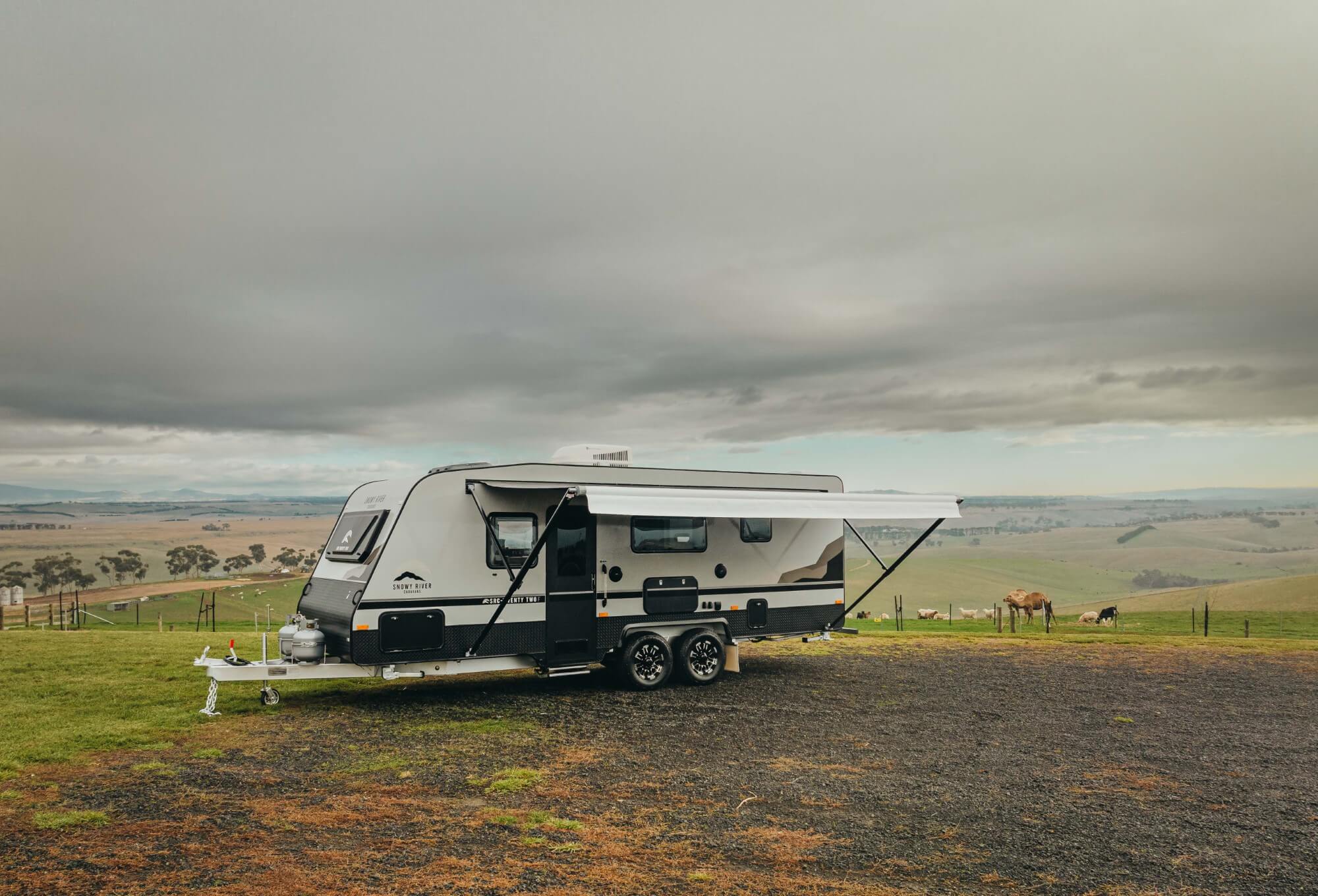
New Caravans
With a new caravan, you know exactly what you’re getting. A new van will come with a manufacturer’s warranty, so you know that you’re covered if any issues arise.
All new Snowy River Caravans come with a 5-year structural warranty and 2-year manufacturer’s warranty.
Buying a caravan through a dealership also usually means spending time with a salesperson and making informed decisions on optional extras, if your car can tow the caravan, and a detailed handover when it’s time to pick it up.
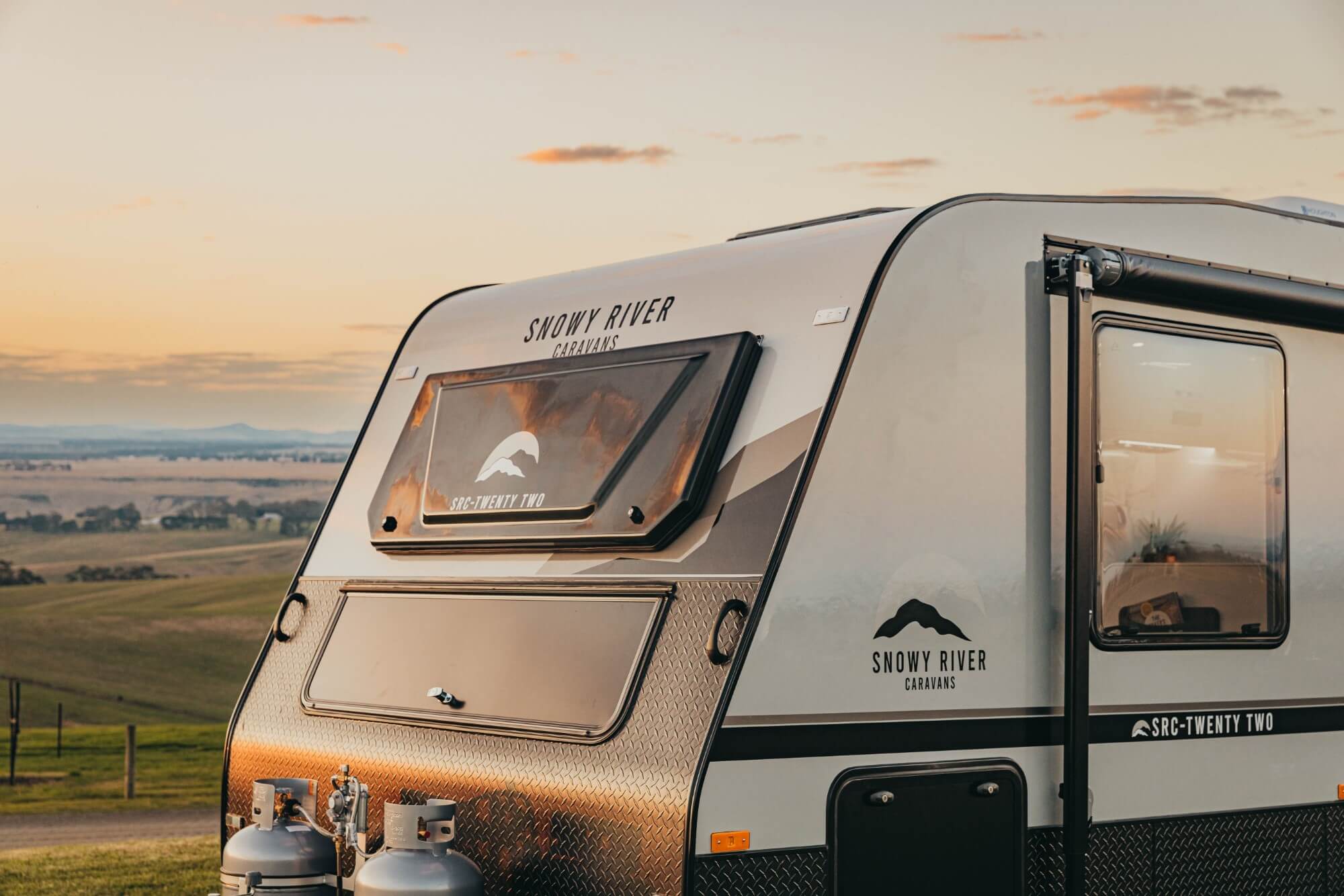
Standard Features and Optional Extras
There are endless possibilities for customisation and personalisation when it comes to caravanning. Whether you’re after a few creature comforts or want to deck your van out with all the bells and whistles, we can help you make your caravan dreams a reality.
Some of the most popular features and accessories people choose to have on their caravan include:
- Solar panels
- Awning
- Washing machine
- Lithium batteries
- Reversing cameras
- Bike racks
- Air conditioner
- External shower
Buying a Caravan That's Right For You
Your towing vehicle
How often you'll use it
Who's coming with you
Your budget
Storage
What you'll use it for
Do some brand research
Why Choose a Snowy River Caravan
Snowy River Caravans are perfect for those who love spending time outdoors and exploring all that Australia offers. We specialise in making tough, rugged and reliable caravans that can handle whatever you throw at them.
If you’re looking for a caravan built to last and give you years of enjoyment, then Snowy River Caravans is the right choice. To learn more about our range of caravan models or discuss your build options Download a Brochure or book a viewing at your local dealer.

